2017 Yamaha YZ250FX Race Test
The Ultimate Race Bike?
MSRP: $7999
- Motor has managed to get even better for 2017.
- Solid platform allows for a great race bike.
- Still a do-all bike.
- Suspension wasn't great for West Coast style of GP racing.
- Kickstart doesn't come stock.
Introduction
- Yamaha's off-road 250F race bike.
- Based off the highly touted YZ250F.
There is a big push in the off-road market lately by most of the Japanese manufacturers and Yamaha really started it. In fact, they may be the most heavily involved with the addition of three off-road models in the YZ250X, YZ450FX, and the YZ250FX. The smallest off-road competition racing bike is the YZ250FX-- based on its motocross brother, the YZ250F. It features the rearward slanted engine with the intake in the front that receives outstanding reviews by just about everyone. Likewise, it gets most of the necessary elements to make it a full off-road race bike like a wide-ratio six speed transmission, 18 inch rear wheel, electric starter, skid plate, and much more. With the attention this bike gets from Yamaha, it definitely holds its own against the ever popular KTM 250 XC-F.
Dirt Bike Test raced this bike during the 24 Hours of Glen Helen this year. With six young but fast riders at the helm, they emerged after 24 hours with a 1st in the 250 Expert class and 2nd Overall behind Colton Udall’s Ox Motorsports team who has won the race a time or two. We installed an IMS 2.5 gallon dry break tank, GPR Stabilizer and triple clamp, Maxxis Maxxcross SI tires, ARC clutch perch and levers, and some Fasst Company Flexx Handlebars. We did some pre-race testing with the bike completely stock, asked riders for the opinions during and after the race, and did some further testing in completely different terrains to get a good overall test on how this bike works.
Changes
- Plethora of motor changes for increased durability and performance.
- New frame along with new footpeg position.
- Stylistic upgrades like black rims and new graphics.
- Electric start only.
For the new year, Yamaha introduced quite a few changes in the engine department as well as the chassis department. Many of the changes are what the YZ250F got for this year including redesigned head ports for a straighter intake, higher lift camshafts, valve springs, connecting rod, air funnel, throttle body joint, mid-pipe, and a change to the rev limiter. . However, the 250FX received a new piston and piston pin while the motocross bike didn’t. Its redesign includes a flat top crown with a bridge box structure while also reducing the weight by 7%. Similarly, the piston pin weight is reduced by 18% as a result of a 3mm shorter pin, reduced thickness by 0.6mm, and a DLC coating applied for less friction. In total, the weight reduction between these two parts exists as 18.3g. All of these changes are claimed to increase the power output. Durability wise, the engine cases underwent a heat treatment process, received an oil sprayer claimed to cool the piston 50 Fahrenheit , a clutch arm bushing inside the cases, and 2nd, 3rd, and 4th gears underwent a WPC treatment. Also, the kickstarter was removed to reduce the weight by 1.74lbs so the bike relies solely on the electric start system. An optional kickstart kit is offered for $210. The one YZ change the FX did not get was the retiming of the counterbalancers, a change that did not seem to help the bike out in longer off-road races were less engine vibration can be a factor.
Chassis changes include a new frame with a larger footpeg area section just like all the motocross bikes. The footpegs and shifter that sit 5mm lower, suspension updates front and rear, 270mm front brake with new pad material, oil and fuel warning lights, and a plastic skid plate. Also, recessed dzus fasteners, new rear brake disc, black rims, and graphics round out the lengthy list of changes for 2017.
Power
- Very strong motor from top to bottom.
- A lot of torque for a 250F.
- Wide-ratio transmission is excellent.
Year after year, the current YZF motor has been raved about by every magazine/publication, yet this year the motor has improved even more! The bottom end continues to have plenty of useable and effective power. Similarly, it continues to thrive through the mid and into the top where it seems to rev forever.
What Yamaha has is a full pull of power. It does not have what feels like an additional flywheel weight (even though there is one compared to the YZ), but still there is strong torque for a 250F when the throttle is opened. Then the delivery is pretty smooth, very strong and robust. It is a power that can be ridden anywhere successfully and does not need to be revved or short shifted to work, you can do either. But like any 250F race bike the more you rev it the faster you will be going.
The clutch pull is very light and it makes it easy to boost the power when needed but it can also be a little too easy to use too much if a rider is hard on the clutch. We didn’t have any clutch issues during the race and we informed all of the riders to be as easy on the bike as possible to prevent any mechanical problems.
We ended up dropping from a 51 tooth rear sprocket to a 50 tooth. This was mainly due to all of our spare wheels already coming equipped with 50 tooth sprockets. It made 1st gear a little more useable in the singletrack since 1st gear was a little lower than we prefer. Likewise, when riding a gear high in the single-track, the bike worked phenomenal. It could be lugged around the trails 2 gears high if we wanted and the bike never faltered or stalled.
In the 24-hour race we utilized the stock mapping rather than altering it with the GYTR Power Tuner. We felt that it already has a great bottom end that has a lot of torque while not being overly aggressive. Perfect for a 24 hour endurance race that contains miles of tight single track and rocky canyons. Similarly, it was still plenty fast enough for the wide open roads where we couldn’t get up to top speed with the wide-ratio six speed transmission. The spacing between the gears in the transmission was spot on since the gaps weren’t too large or small. It covered a very wide range of speeds with ease. After further testing beyond the race, the bike could benefit from some tuning to make the bottom end slightly more aggressive.
Suspension
- SSS spring forks and shock work well.
- Too soft for aggressive and fast terrain.
- Perfect for most trail riding.
Due to the drastic differences in off-road riding across the country, setting up a bike to work well in all conditions is just about impossible. For the West coast style of riding/racing, the suspension was too soft for all of our testers. From the motocross track to the faster terrain, we were constantly bottoming out and blowing through the stroke. We adjusted the clickers to try and compensate but we haven’t found a setting that is stiff enough for our liking.
Saying that, when riding in GNCC/enduro type terrain, the bike works great. It soaks up every little bump and rock with ease and the bike never flinched. For trail riding the bike is on the more aggressive or stiff side of the scale, just as it is a little soft for heavier riders on the motocross track. But that is what a compromise in suspension setting is all about. We feel going to stiffer springs should do the trick and we are getting our hands on some in the very near future. Also, we ended up running our sag right around 105mm.
Similarly, when ridden on a motocross track, the suspension really sticks out as a complaint with expert level riders. From the hard landings on big jumps to the fast breaking bumps that develop, it was hard to control the bike as you go faster and jump further. But it is an off road bike so that is to be expected when riding a motocross track.
Compared to the older 250FX, the bike feels like it rides a little higher in the stroke in the shock. The bike’s suspension is a little more active or free moving, something that our team riders didn’t like in the shock specifically but it was easy to tune it out with additional rebound damping.
Throughout the race, many of the riders commented on how soft the suspension was. Both the forks and shock would blow through the stroke, even for the lightest rider on the team who weighs around 130 lbs. And with the addition of the lights during the night portion, it only made it worse. We ended up dropping the forks slightly in the clamp after a few hours of night racing to help keep the front end up as much as possible. Although it helped, it still wasn’t enough to be the ideal setting that the team would have liked. Saying that, when racing through the single track and rock filled canyons, the bike floated through them without any deflection which the team thought was a huge positive. Again, it further shows that the suspension works better in the tight, slower technical riding rather than the faster style riding.
On a later trail ride the bike was excellent after our more experienced tester opened up the rebound on the shock to a more stock setting. Even when compared to Yamaha’s WR250F we feel the FX is a better and more compliant ride, especially as the speeds increase. It absorbs without deflecting and here rarely bottoms. And we feel that for riders in the novice range our issues with the suspension feeling soft would be much less of a concern.
Chassis - Handling
- Very stable at all speeds.
- Turning is very neutral, fast or slow speeds.
- Ergonomics were comfortable for all of our testers.
The YZFX has a larger look than a lot of the other bikes out there but it does not stand out as much as it used to. Some riders were skeptical of it feeling wide but they said it wasn’t even a thought as soon as they started riding it. It isn’t the lightest feeling bike but it isn’t heavy by any means. In fact, it has that weight feel that seems to add to the stability of the bike, not hinder it.
Turning was excellent compared to a 125 or even a 250 two-stroke and part of that is due to the motor. It is very easy to control and pulls you through the corner working in unison with the chassis. It never wanted to jump out of any ruts and it excelled in the flat track corners on Glen Helen’s truck course. Similarly, when racing or riding through tight single track, it was very easy to maneuver and no one had any issues in this department. The ability to change directions in a hurry is very good on this bike.
The YZFX’s balance was off for our team and the suspension settings made the bike ride low in the forks, even with a low ride height. Although it had a stinkbug feel, the bike was still very stable. Some even stated that it was the most stable bike they had ever ridden. We set the bike up to allow us to ride aggressively and fast while still allowing some comfort to keep us all fresh for the entire 24 hours.
We never experienced any headshake in pre-race testing and once we bolted on the steering stabilizer for the race, it helped control it even more. Also, everyone on the team commented on how predictable and safe the chassis felt. It never did anything unexpected or out of the ordinary which was instilled confidence in all of the riders.
The location of the air filter was excellent for the race. We ended up changing 5 filters throughout the race and each time proved to be flawless. With it being up front and high, it was easy to pull out the dirty filter and install the new one without any problems like dirt falling into the air box. However, reinstalling the air box cover was kind of difficult when trying to rush it. Getting all the dzus fasteners to align properly took some extra work but we still think it was faster and safer than having to remove a seat. Also, we lost 2 of the dzus fasteners after one of the filter changes so we had to duct tape the cover on for it to be completely secure.
The brakes work pretty good and the addition of the 270mm front rotor is definitely welcomed. We didn’t experience any fading during the race but we did have to change a set of pads after the 12 hour mark and by the end of the race, another set of pads were due. The ergonomics of the bike were comfortable for everyone and nothing stuck out as being unusual. Also, the electric start is always a nice touch to any bike and it played a role in our start. The start procedure was to straddle the front wheel with the bike off. By the time our rider’s leg was swung over the bike, he had started it and was putting it into gear. We came around the 2nd turn 2nd off our line and only trailing one of the open experts.
One thing we removed before the race was the neutral switch on the clutch perch. When installed, it prevents the bike from starting unless the clutch is pulled in. This is likely on the bike for safety purposes since it has an electric starter but we felt it was unnecessary and could even hinder our results. When in a rush, pulling in the clutch before starting the bike isn’t usually a thought so we just unplugged it from the perched and tied it to one of the wires behind the front number plate. Also, when installing the lights, we found that the front brake line is a little on the short side. This made it difficult to place on guide on the forks to keep it from rubbing against any of the wires.
Conclusion
- Great all around bike.
- Durability has proven to be top notch in the years past.
- Incredible platform makes for an outstanding race bike.
In conclusion, Yamaha’s YZ250FX is a phenomenal bike. It can do just about everything other than legally ride on the streets. The motor is outstanding and they managed to improve it for 2017! The suspension is on the soft side for faster riders on high speed riding/racing but the slower and more technical the conditions are on the trail, the better the bike works. Similarly, it handles very well and it very stable at high speeds while still turning well which is difficult to do.
Racing a bike at a high level for 24 hours straight will push the limits on any bike and we found no flaws to speak of. Everything went very smooth and we didn’t encounter any problems with the bike. The expert team finished an amazing 2nd overall getting beat by just one Professional team. What may be even tougher is setting up a bike for six riders of all different heights and weights and we feel like the Yamaha allowed us to do a pretty good job of that. On top of that, the reliability in the past has proven to be second to none and we will continue to put a plethora of hours on this bike to once again test its durability.
Recent Product Tests
What Others Said

https://www.yamahamotorsports.com/off-road/models/yz250fx/specifications

http://www.dirtrider.com/2017-yamaha-yz250fx
Leave a Reply

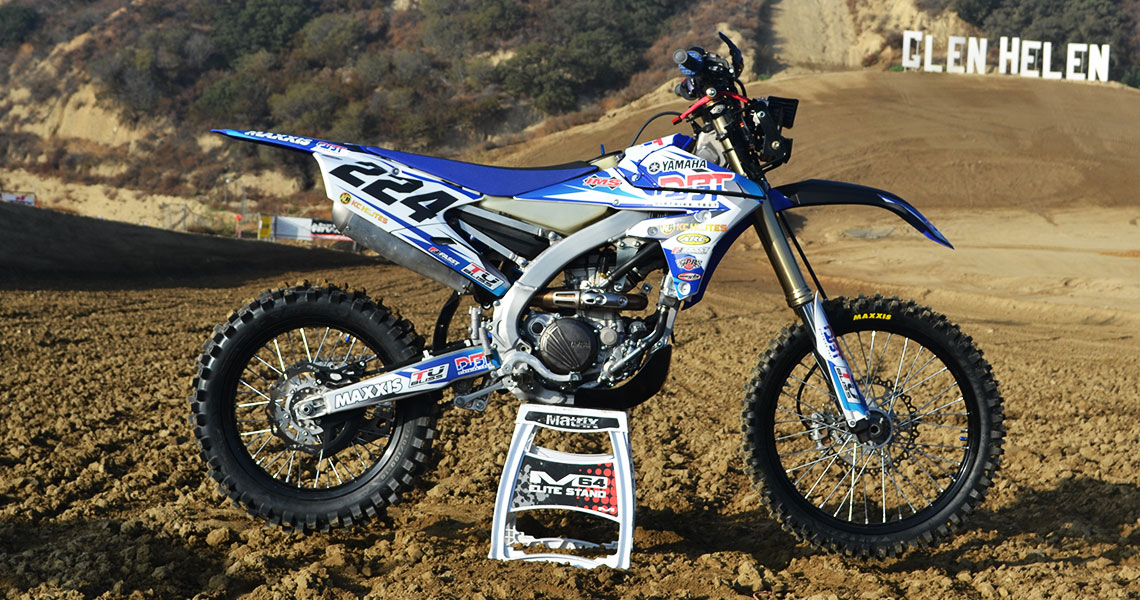
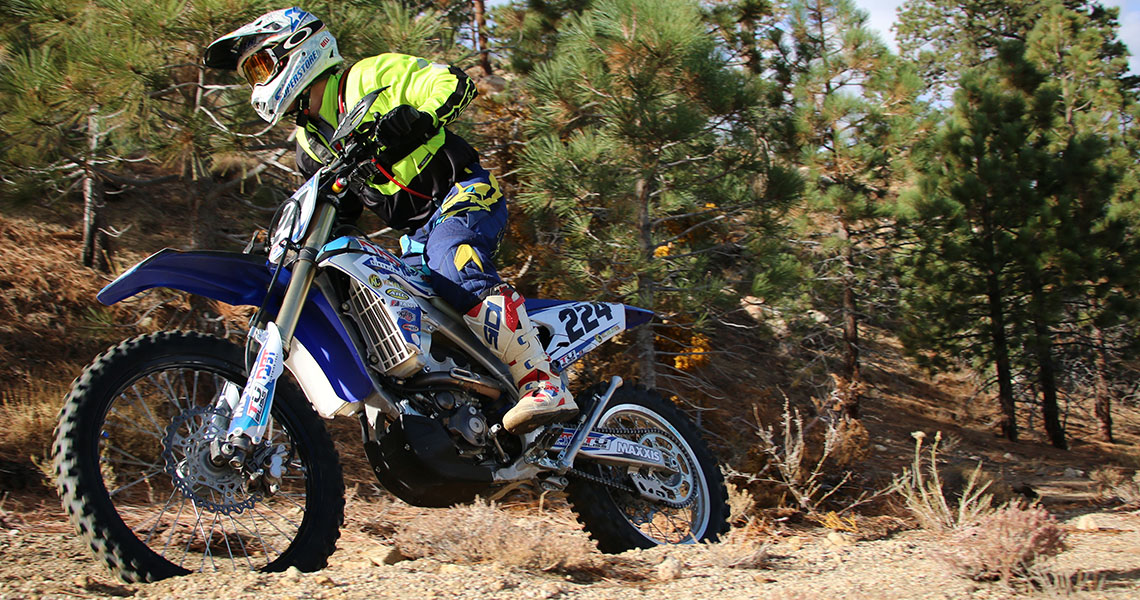


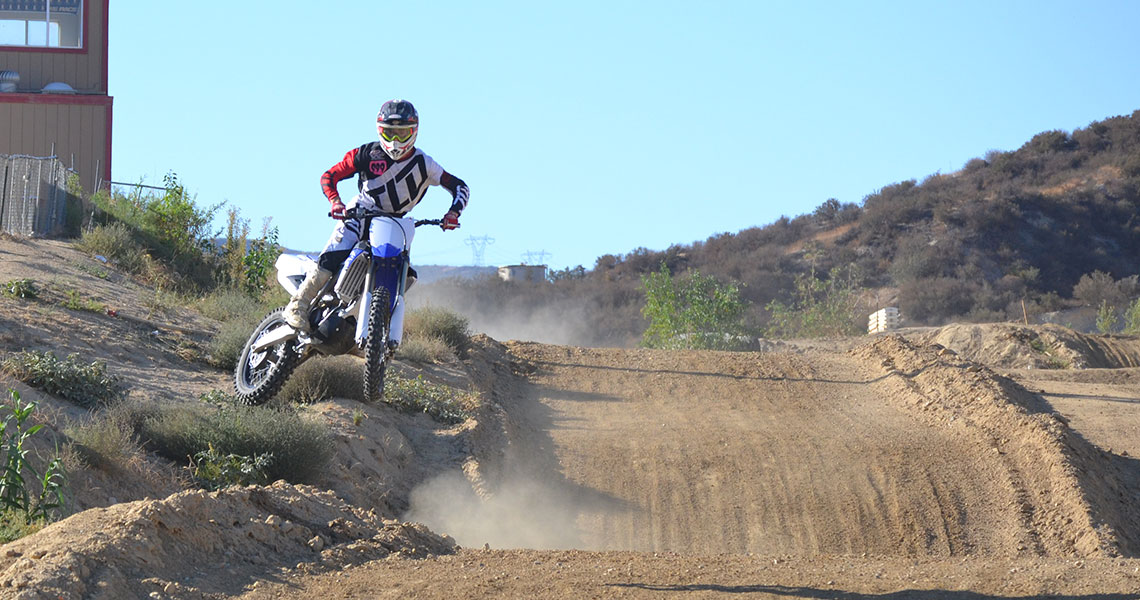

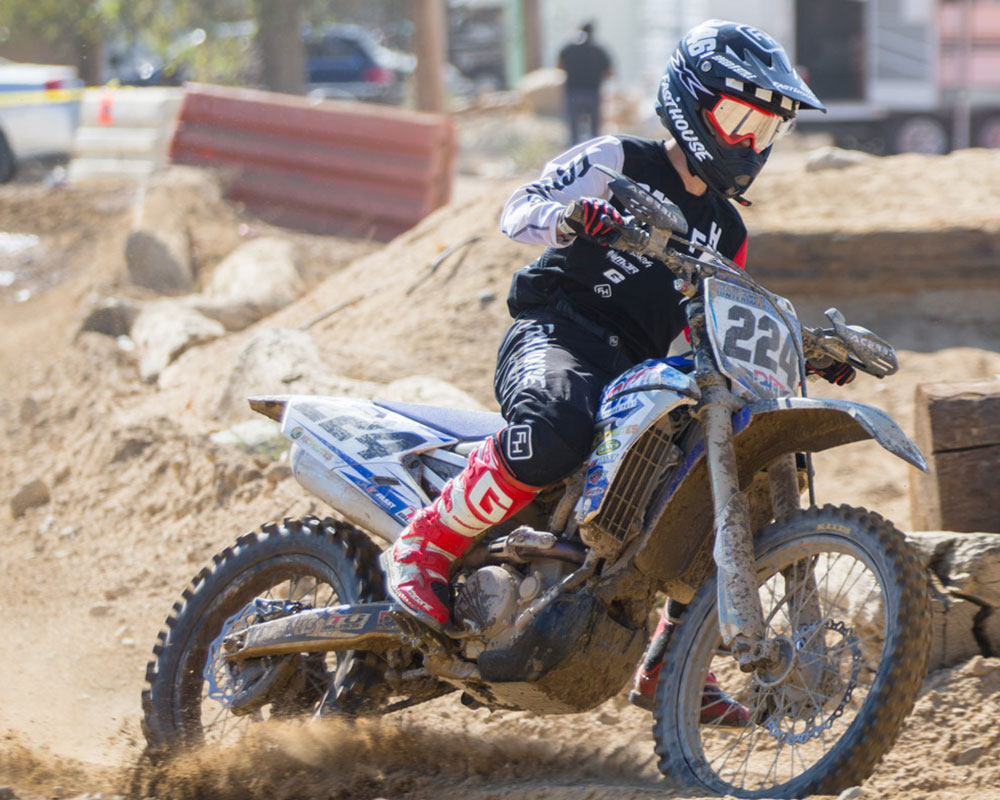

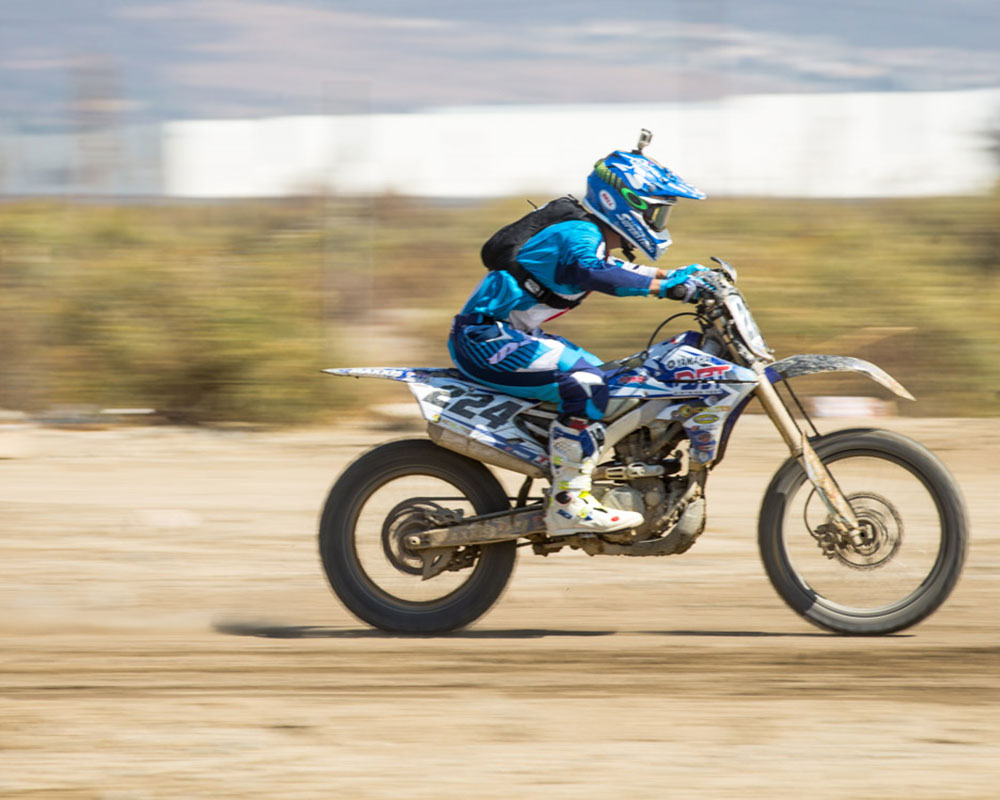
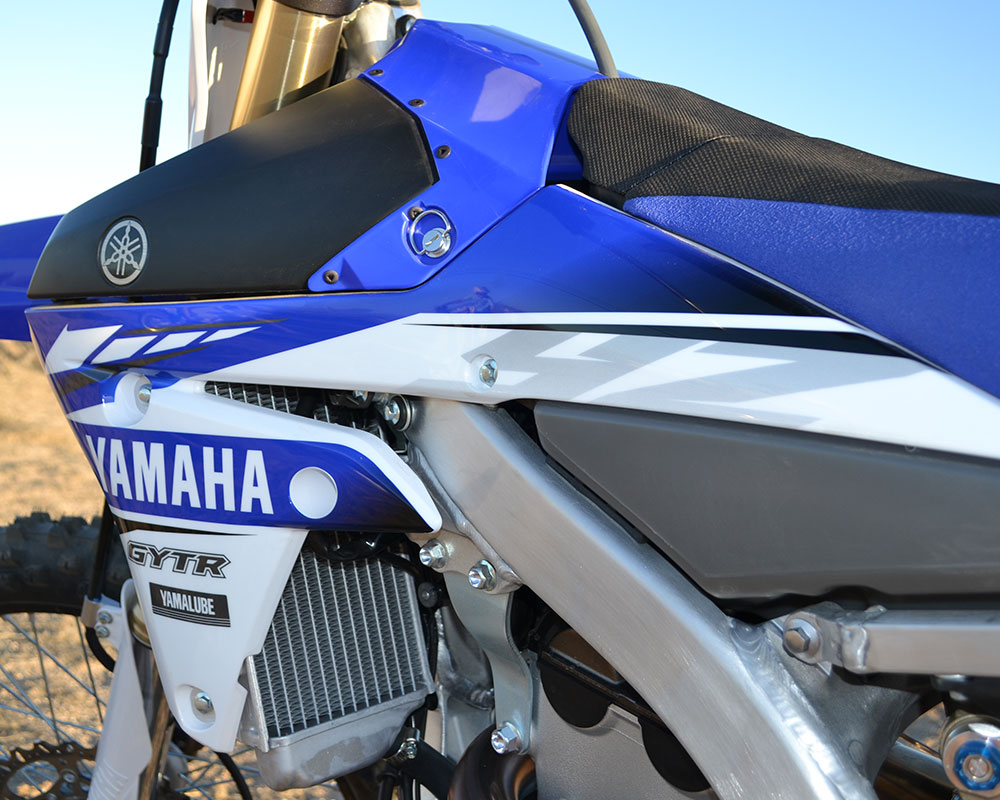
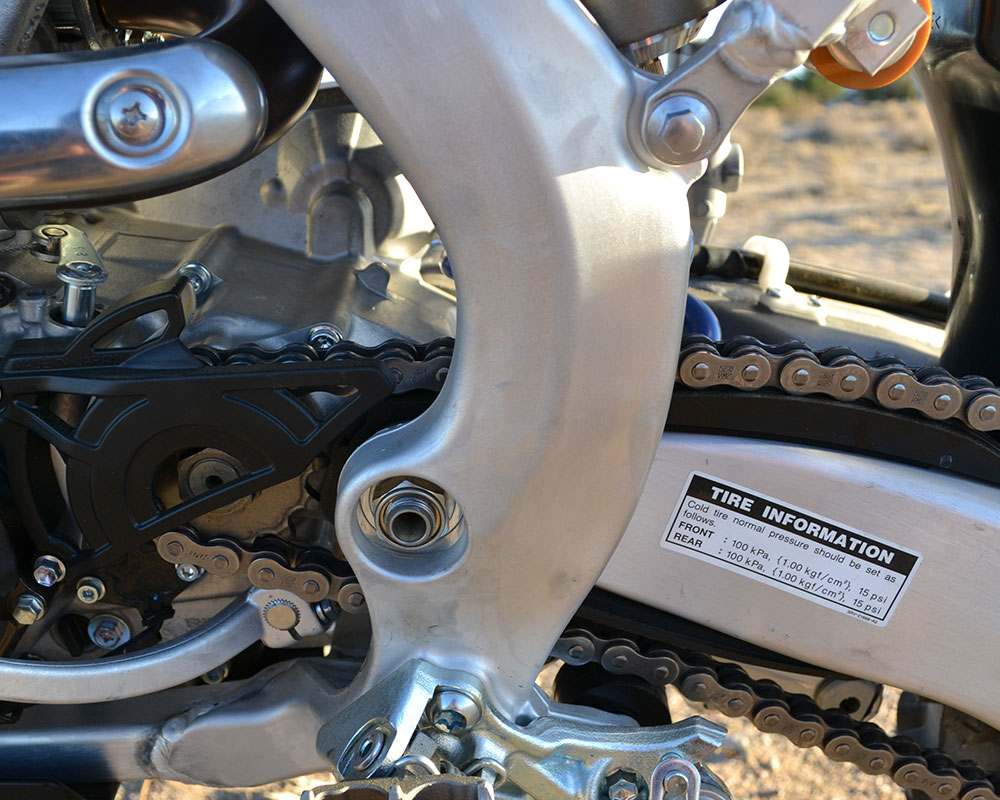
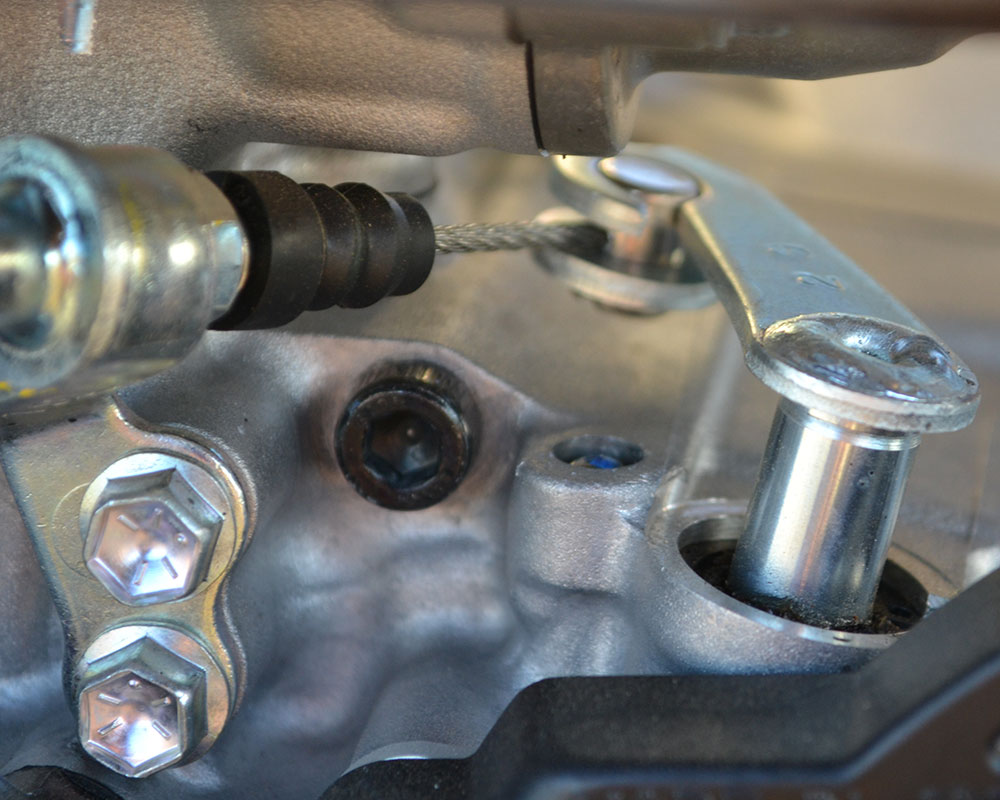
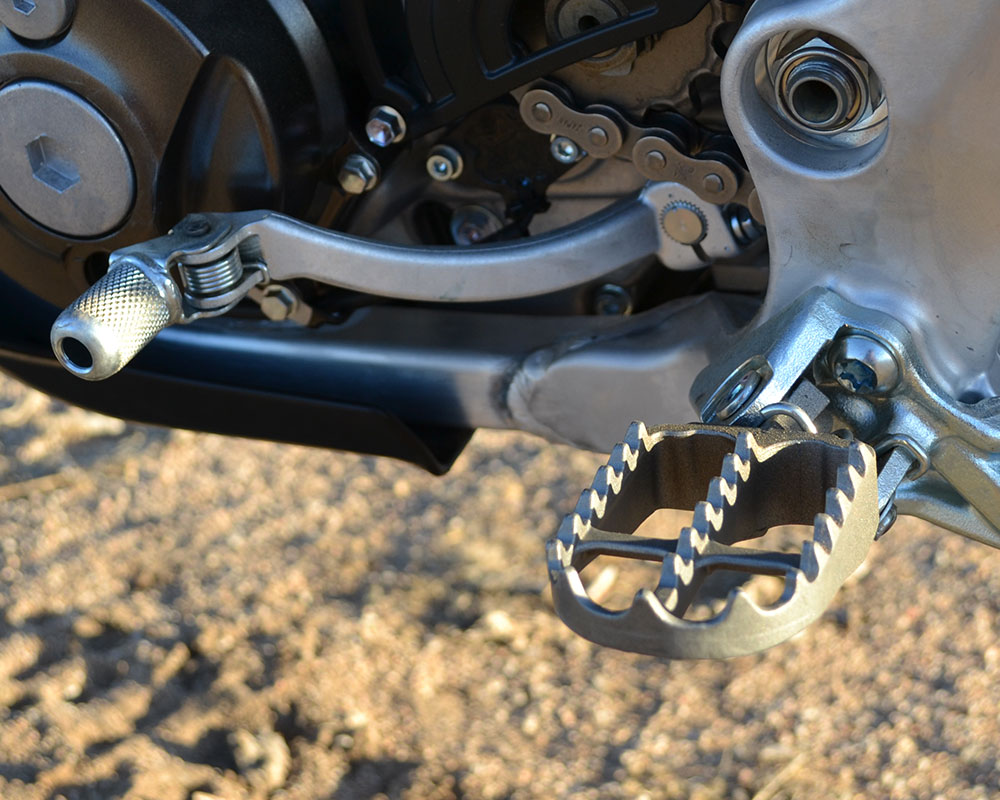

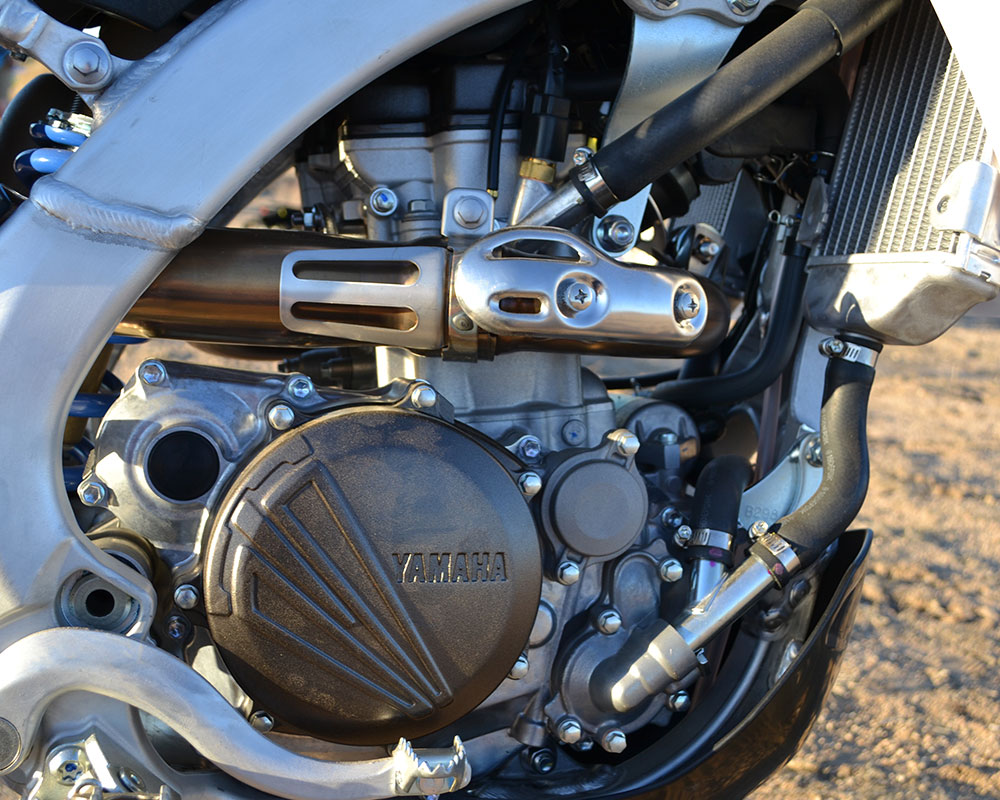

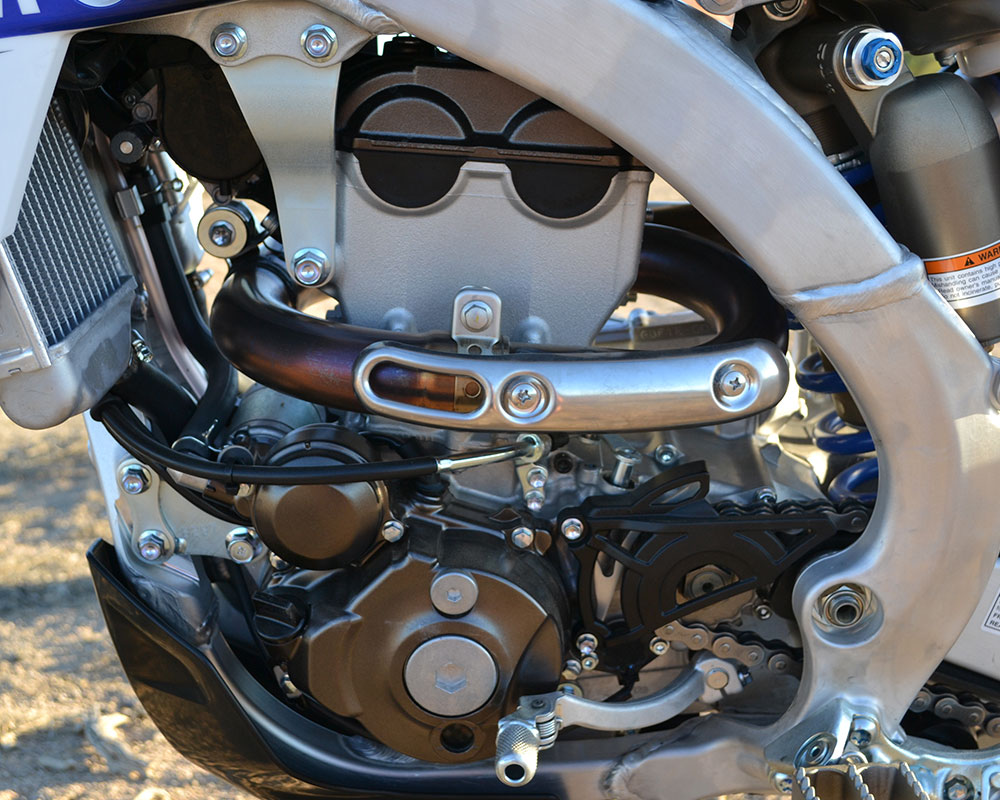

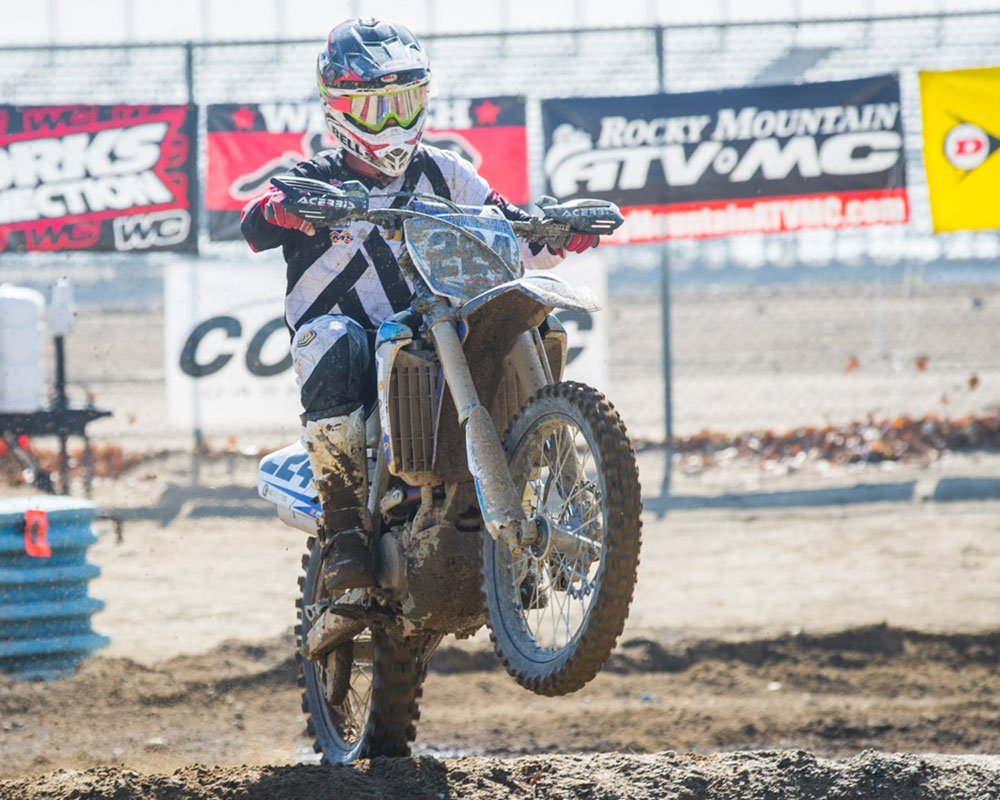
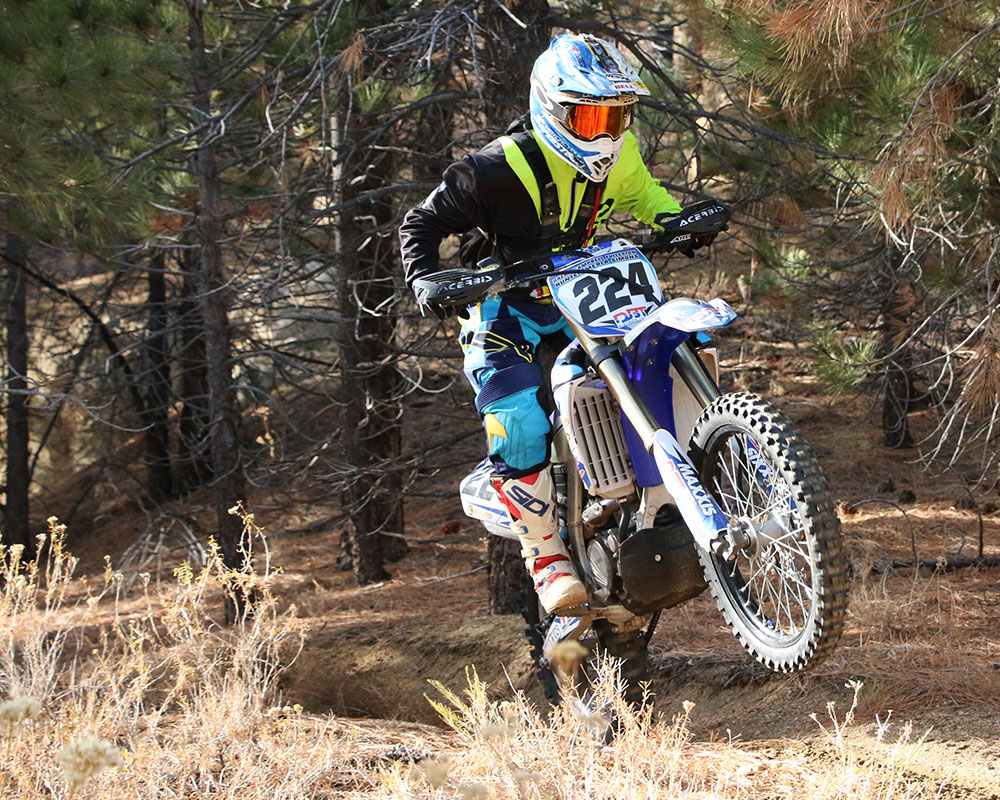

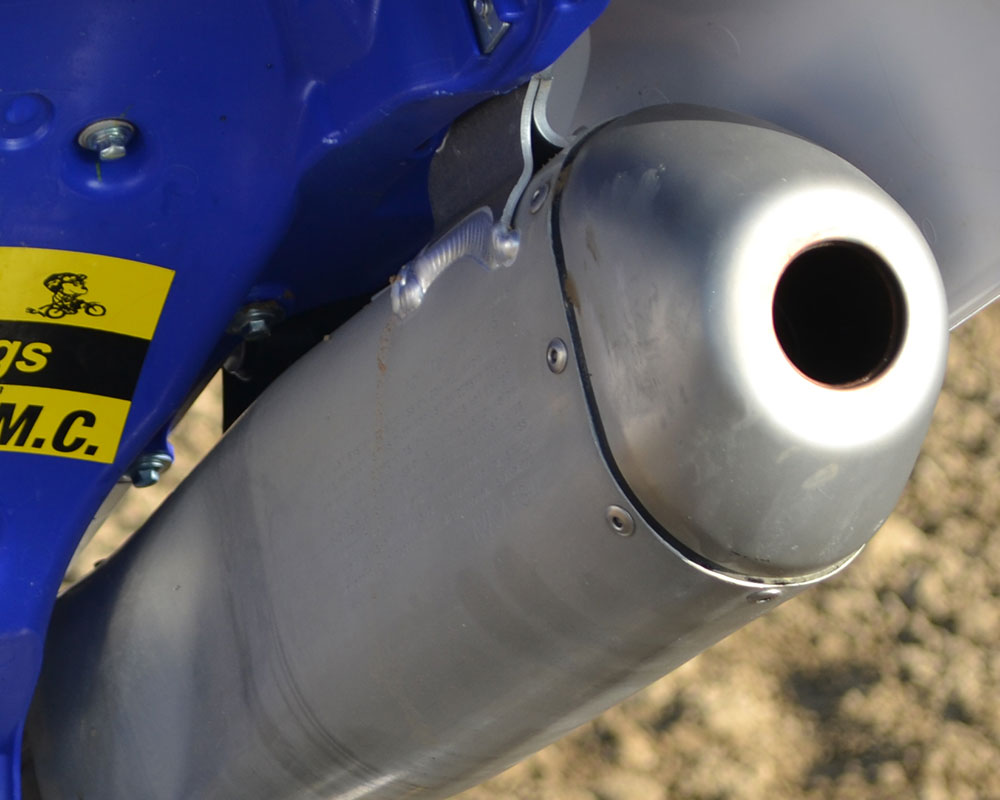
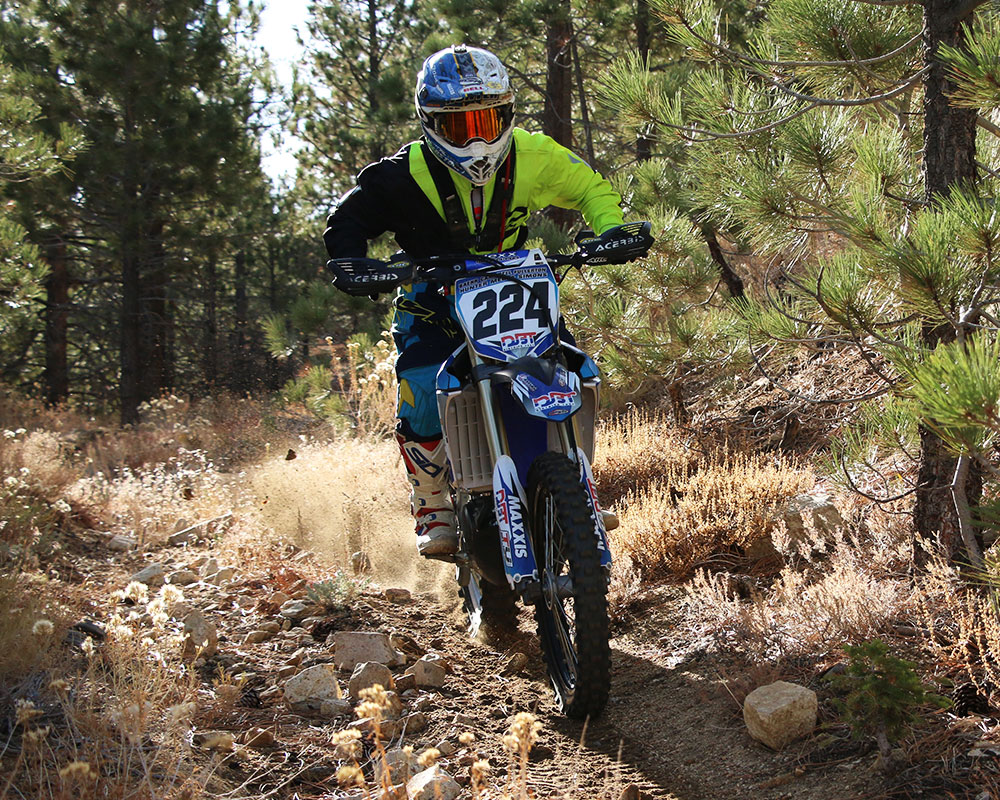
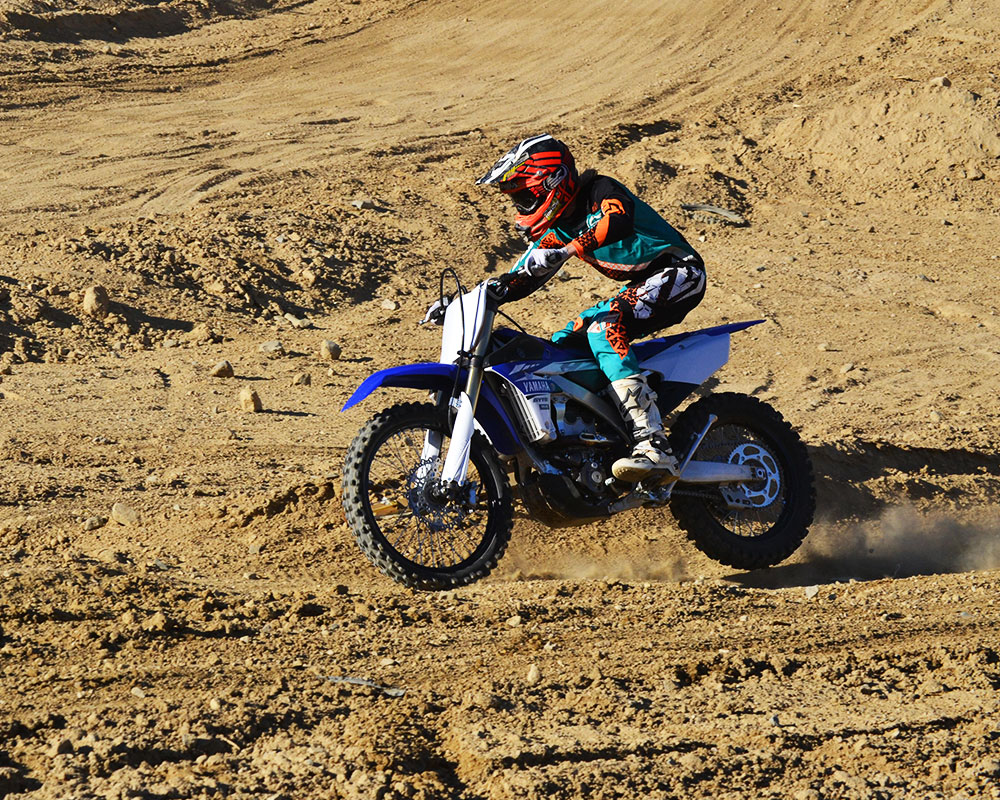
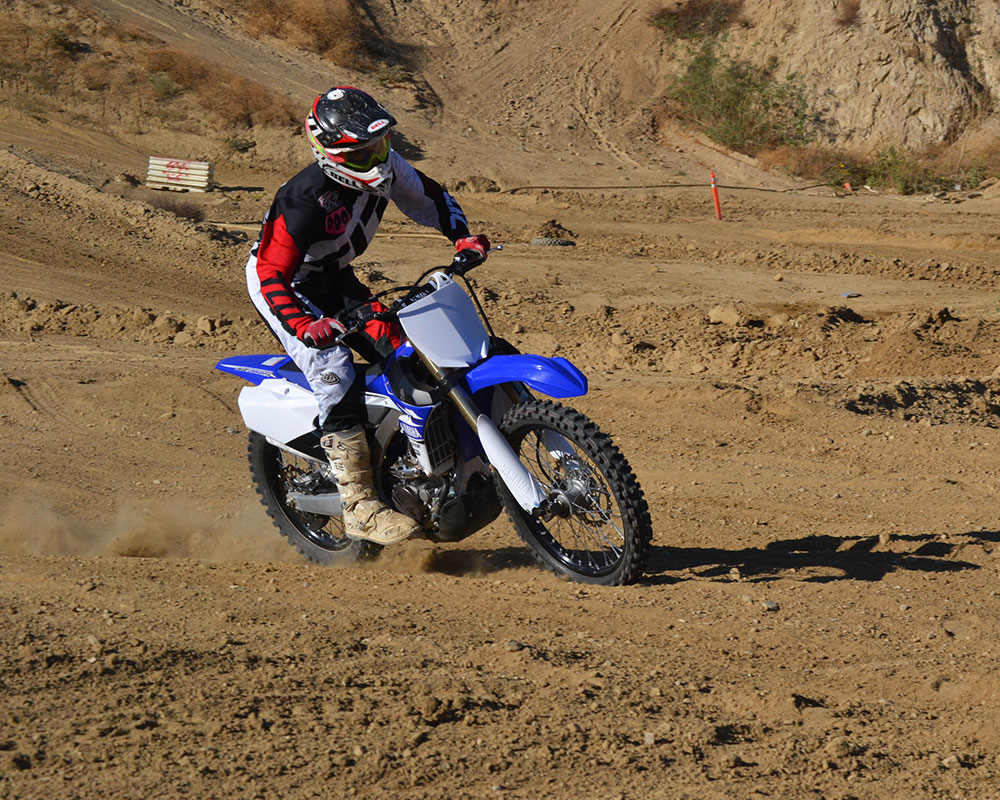
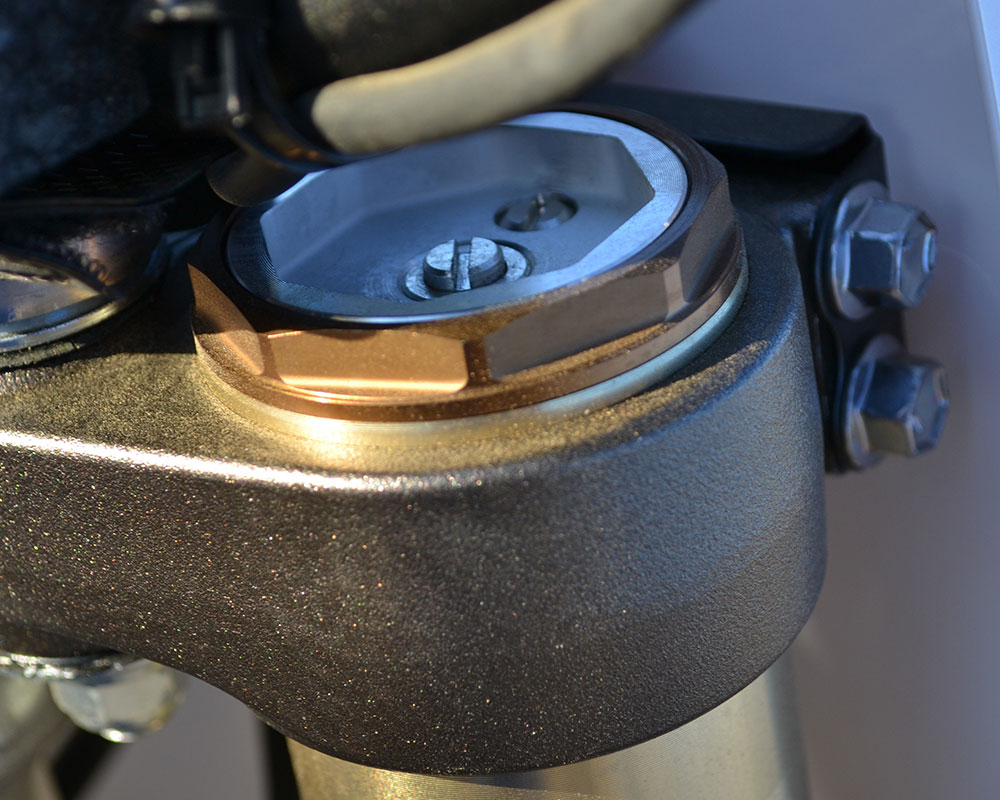
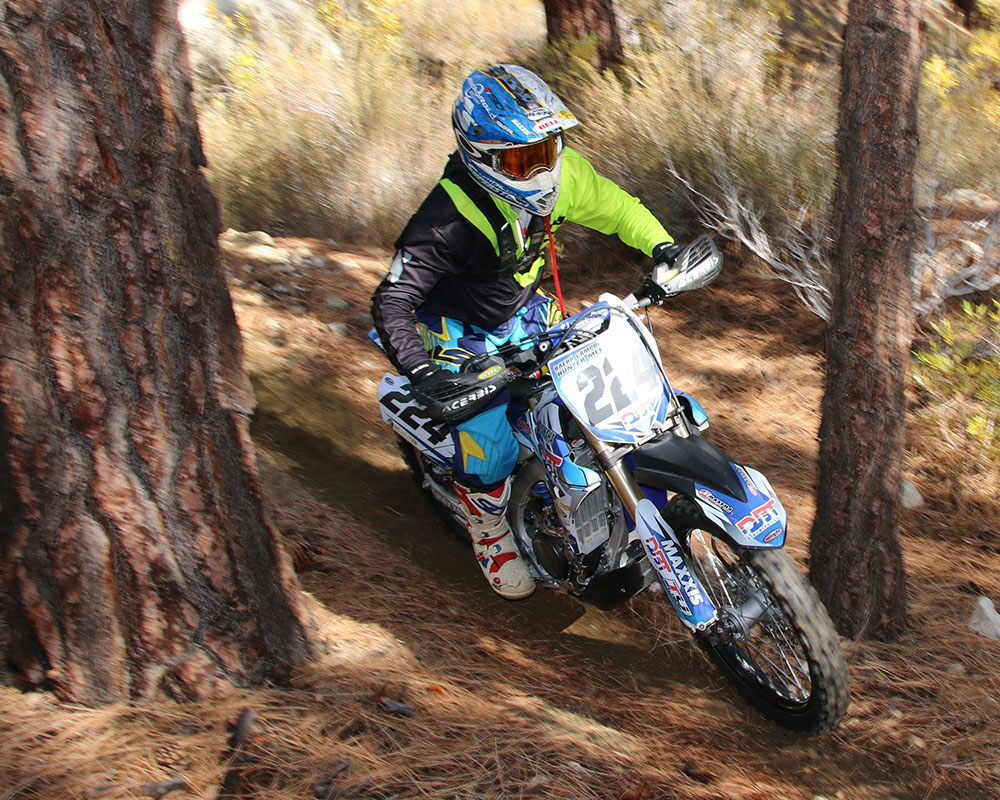

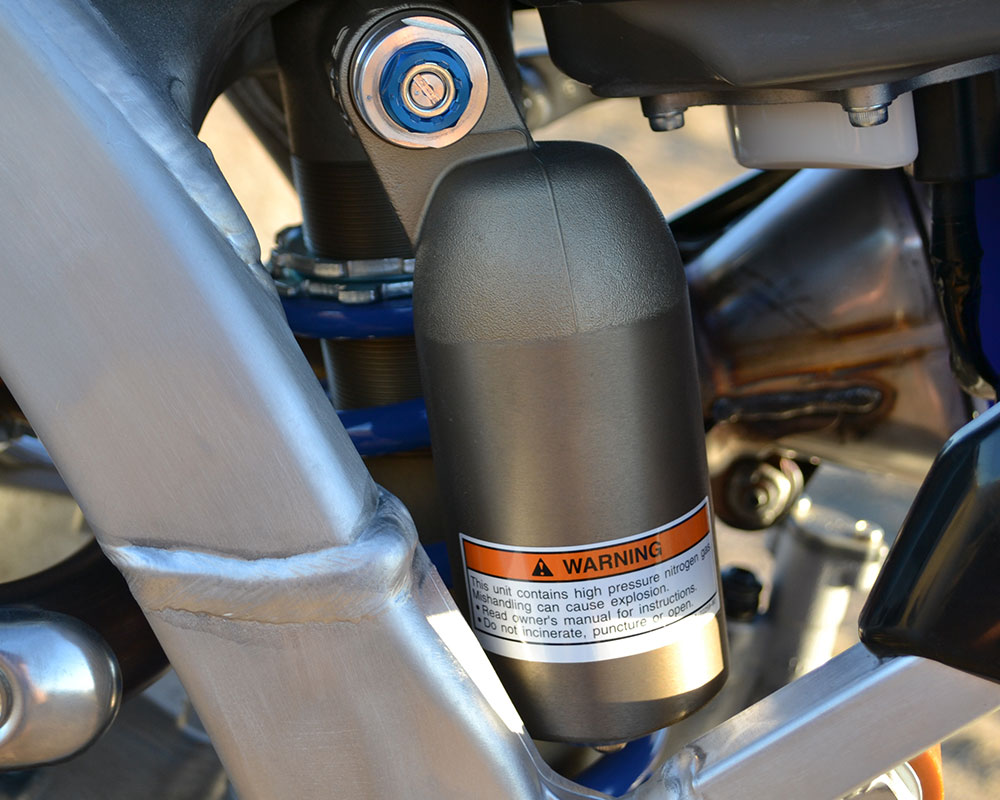
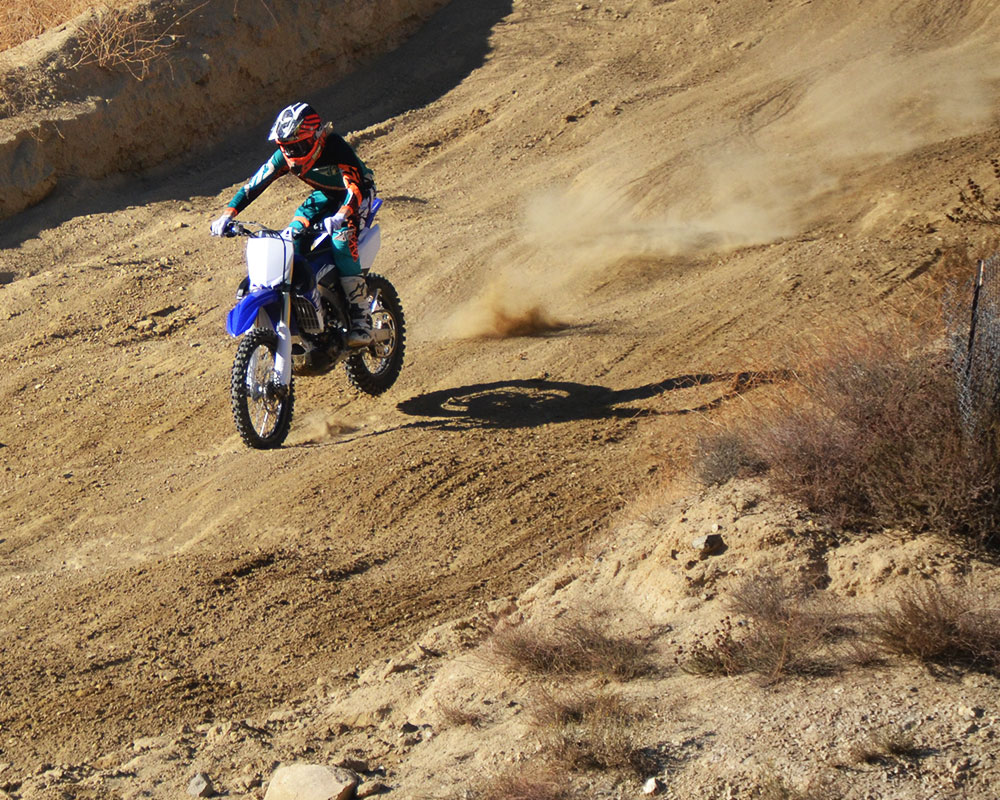

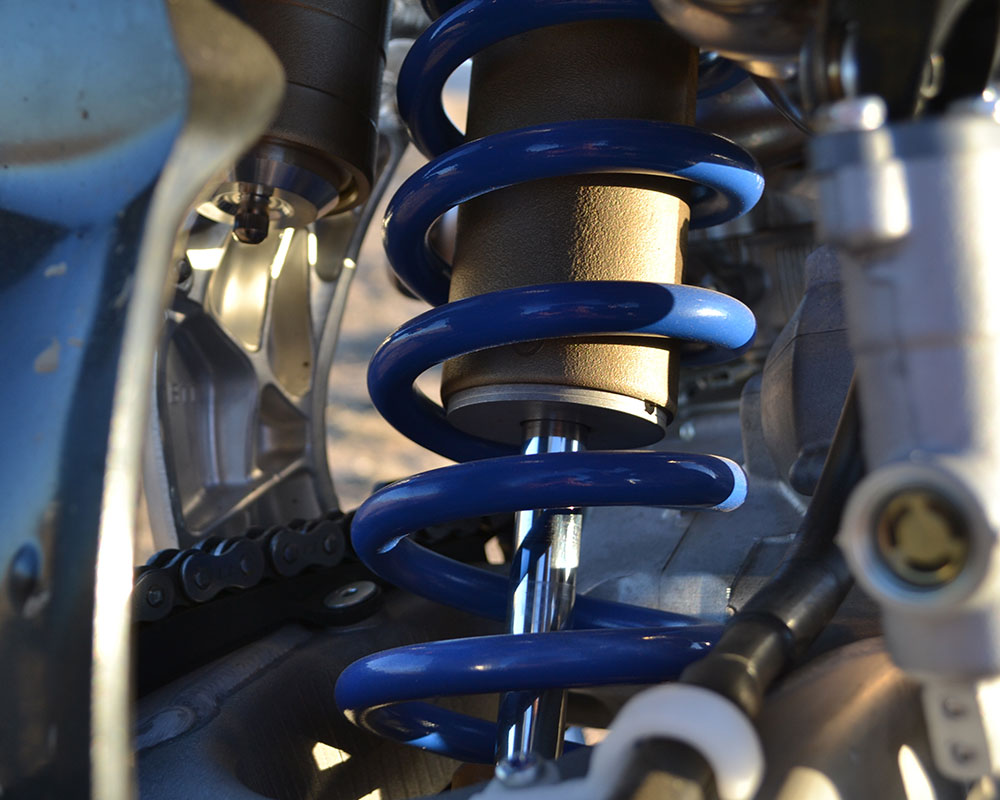
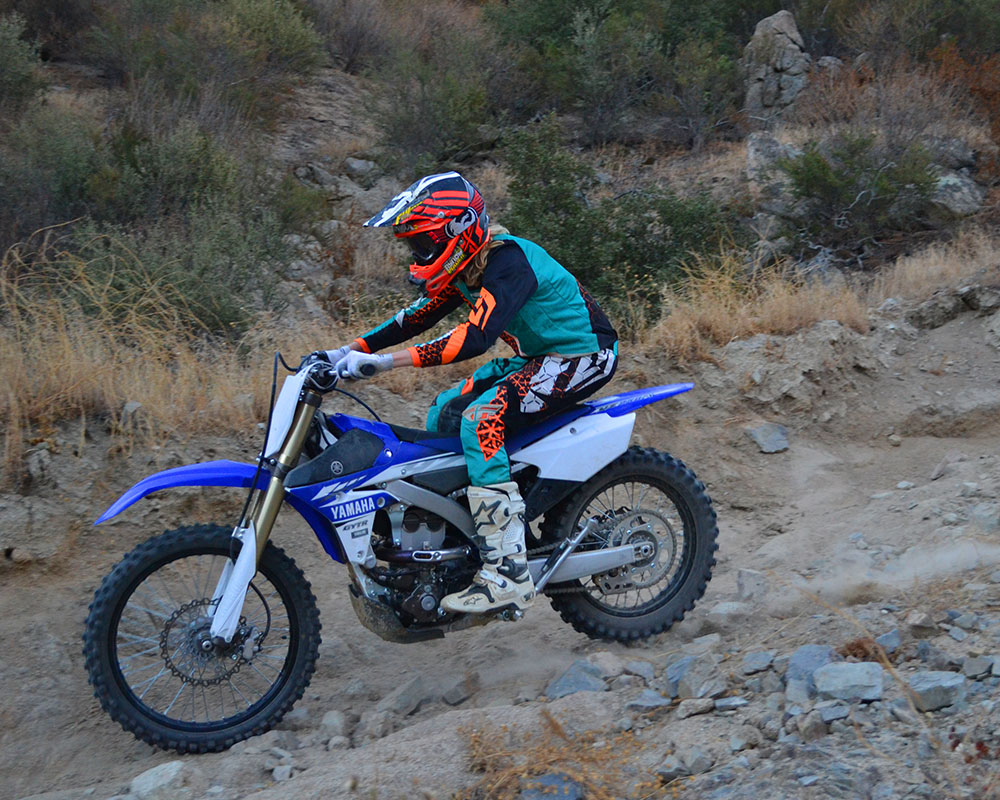
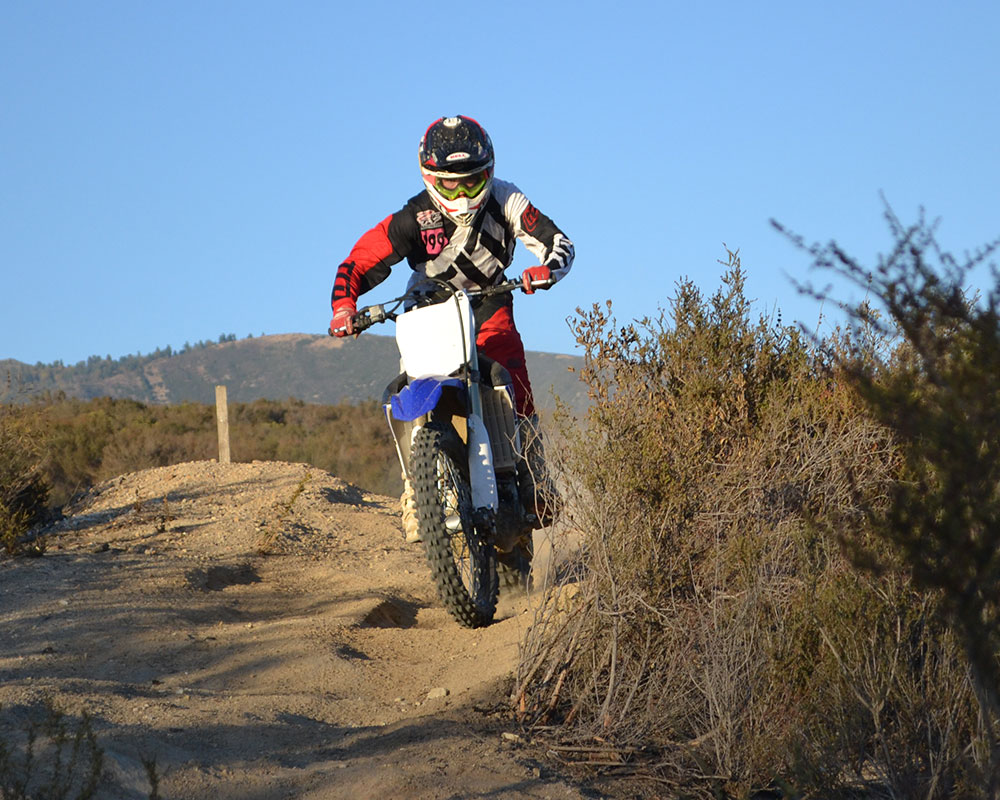
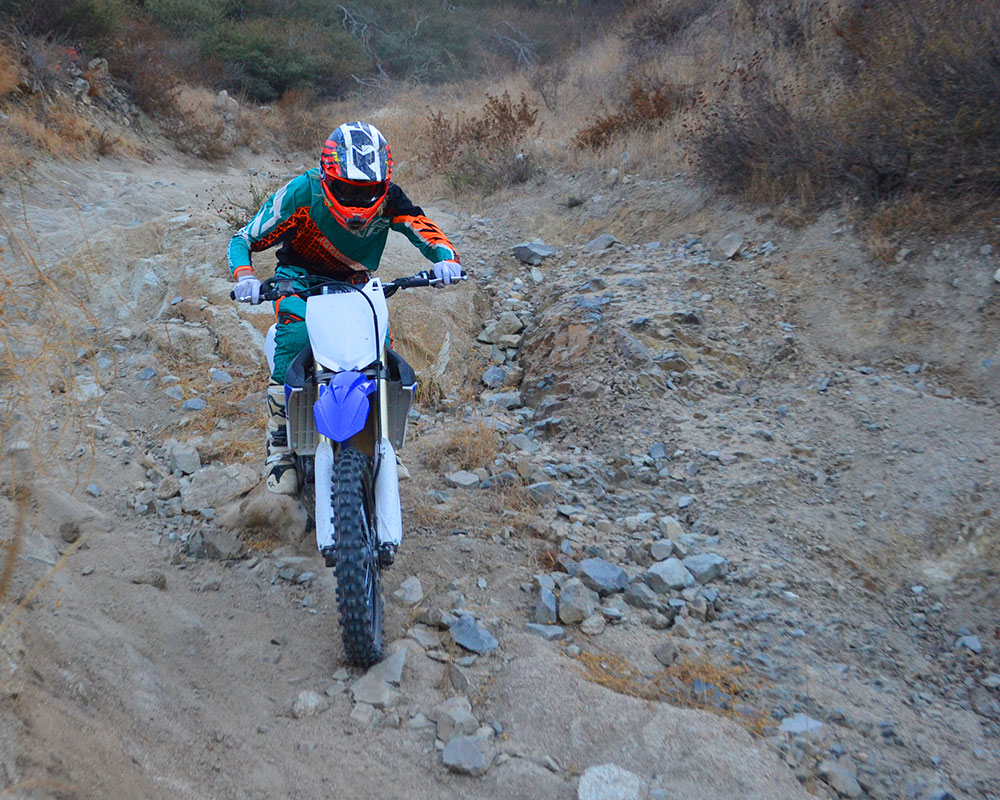
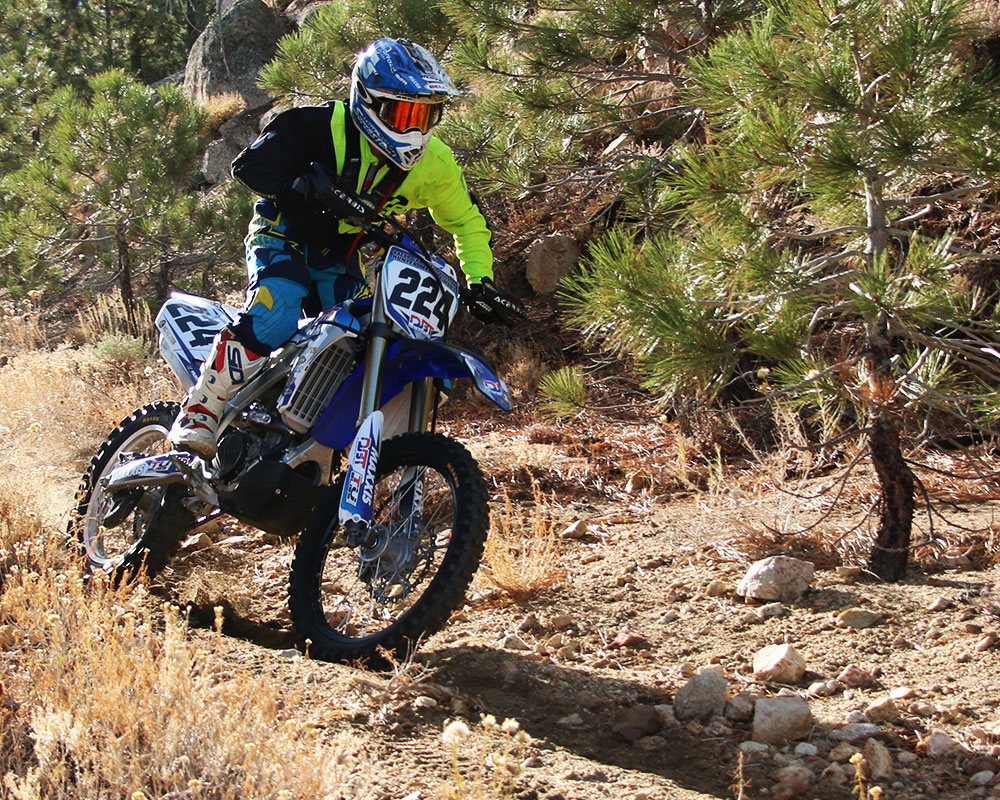
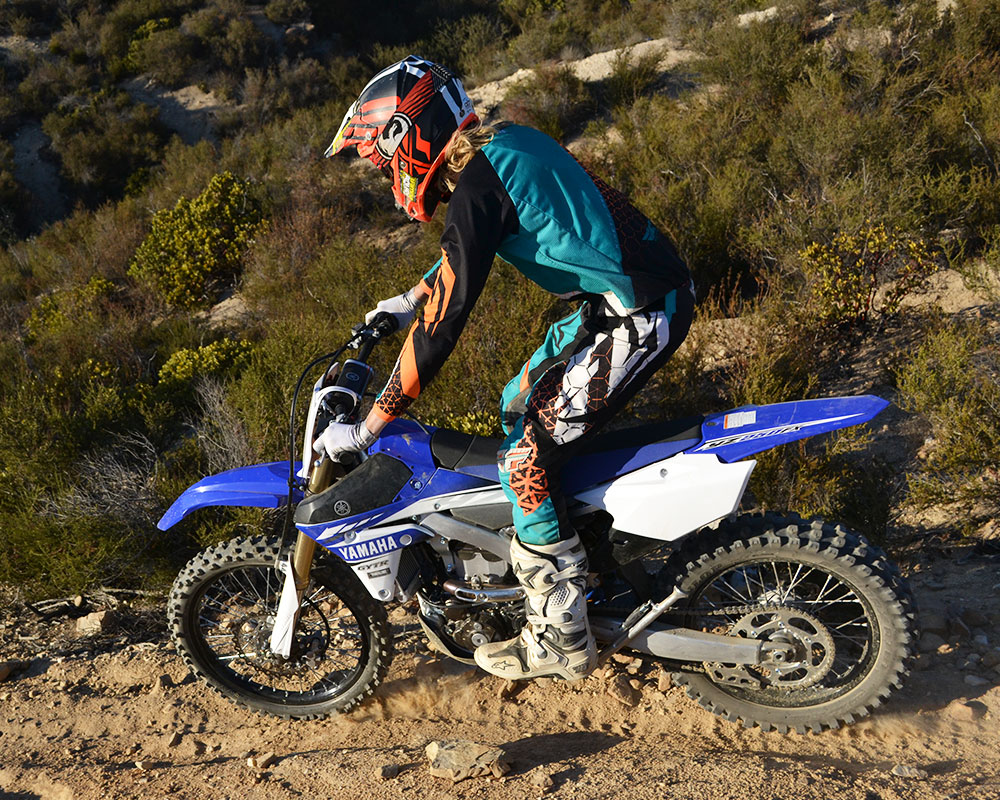
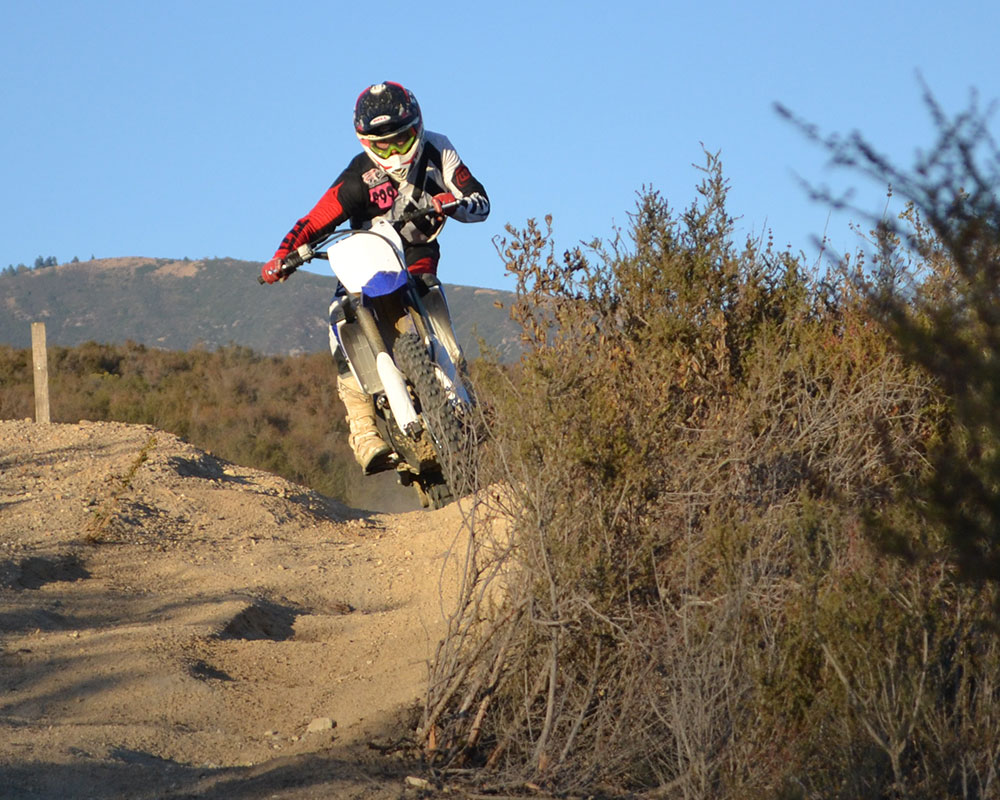
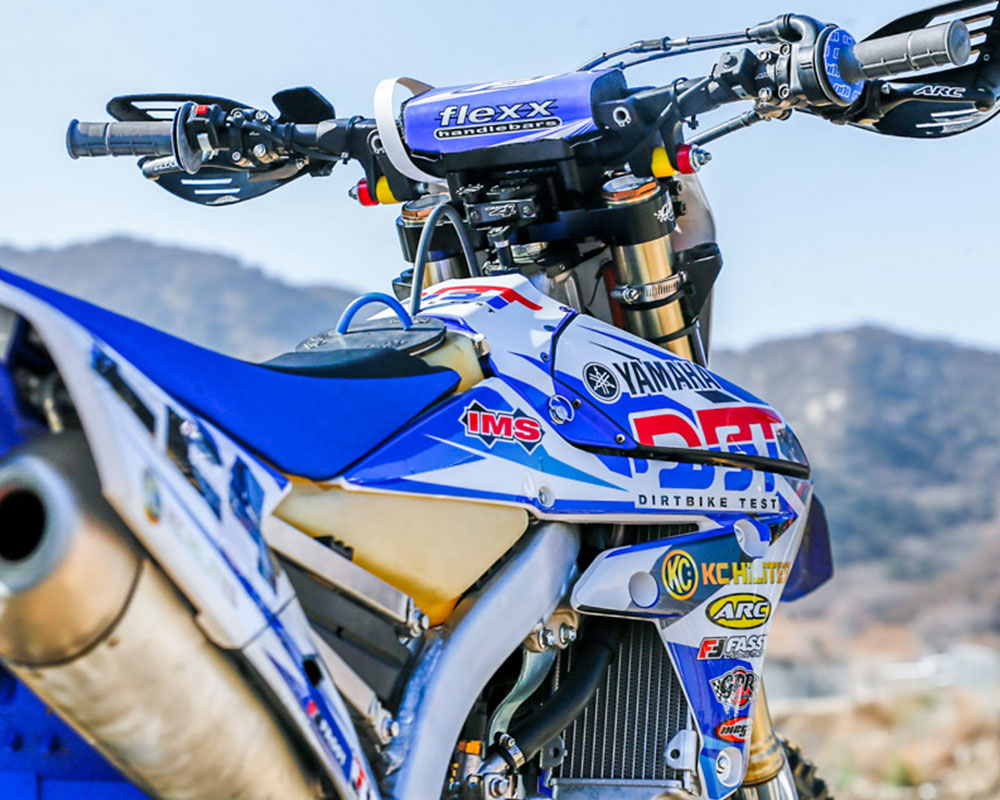
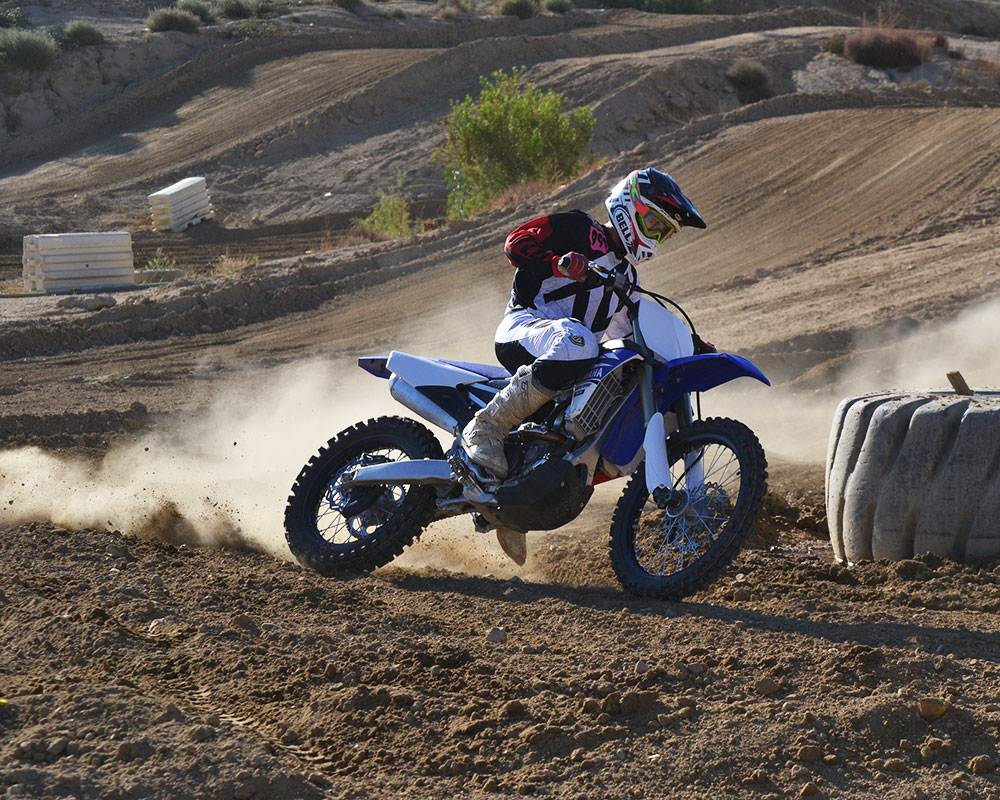
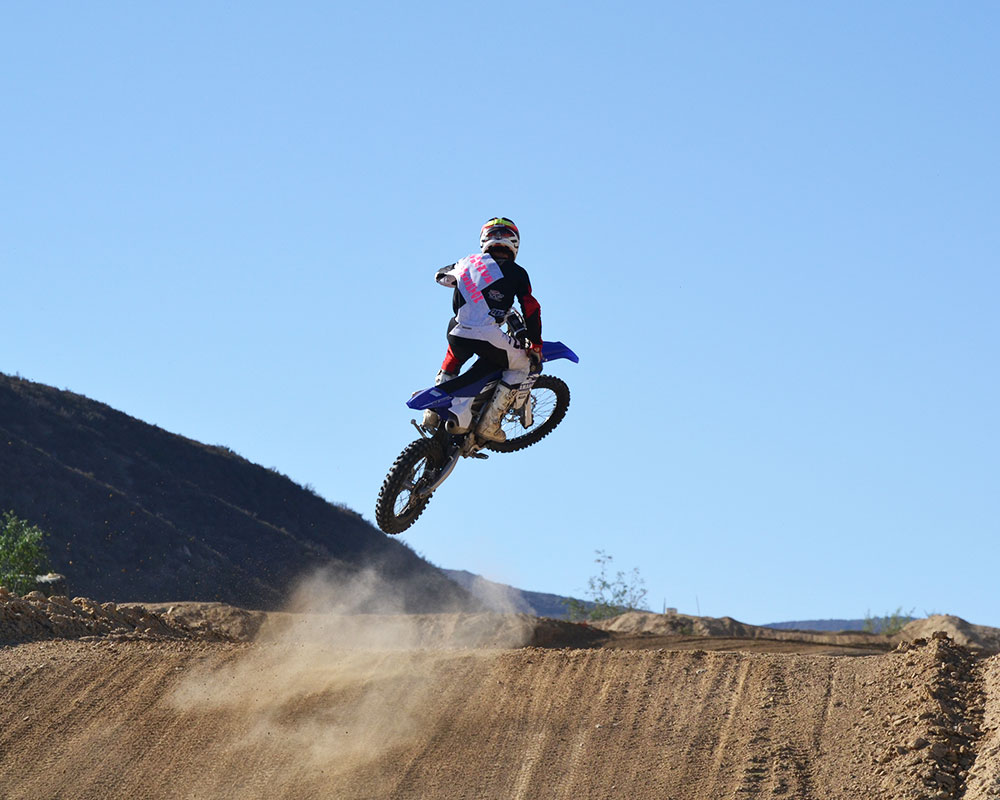
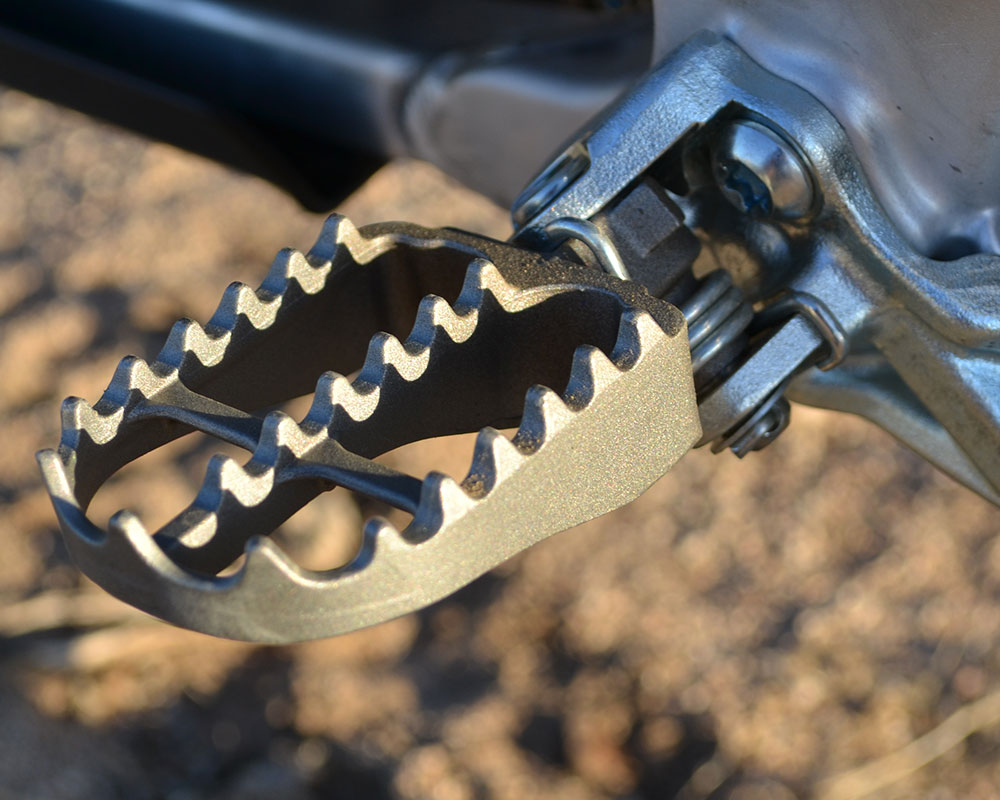
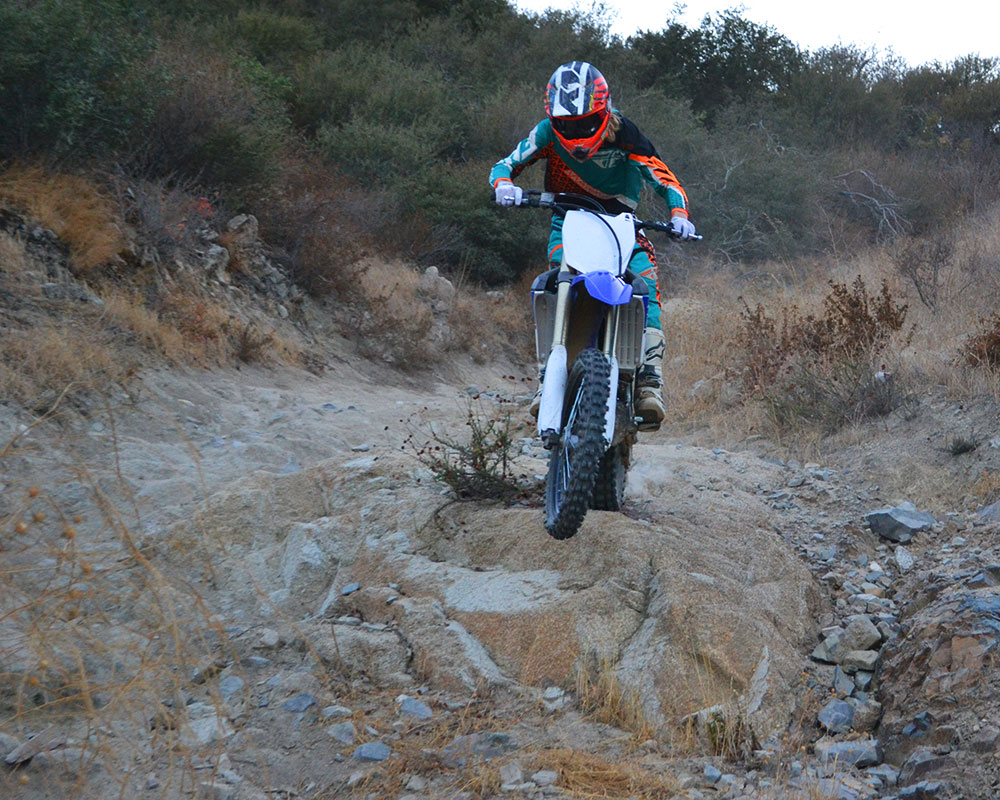
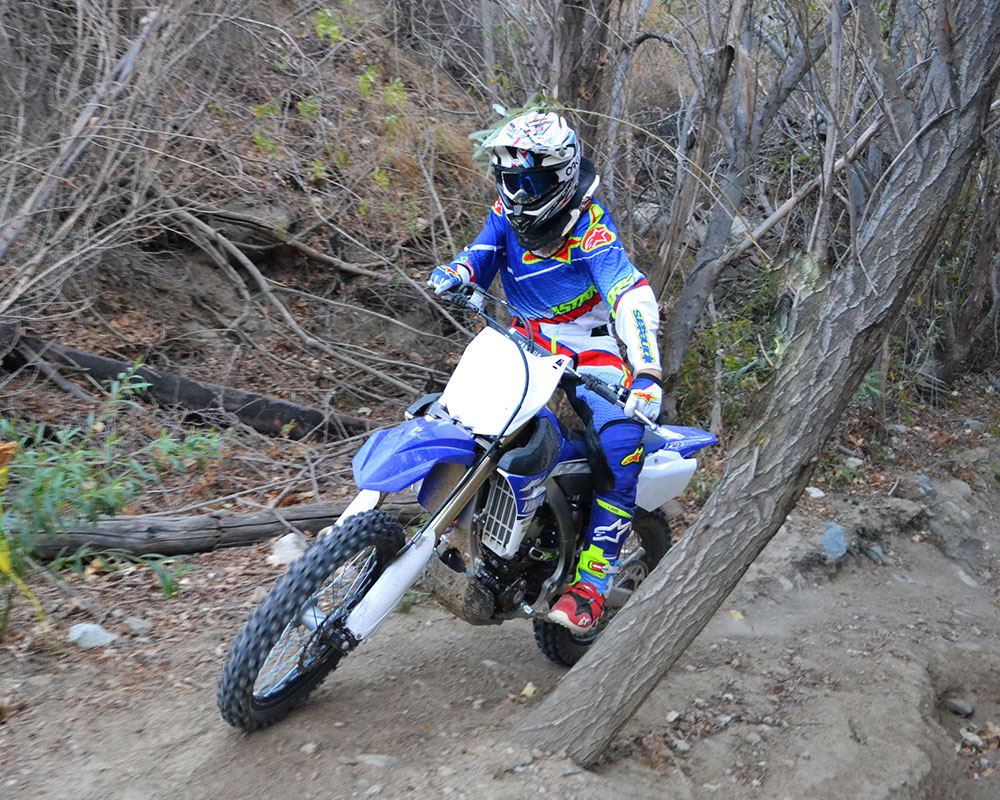
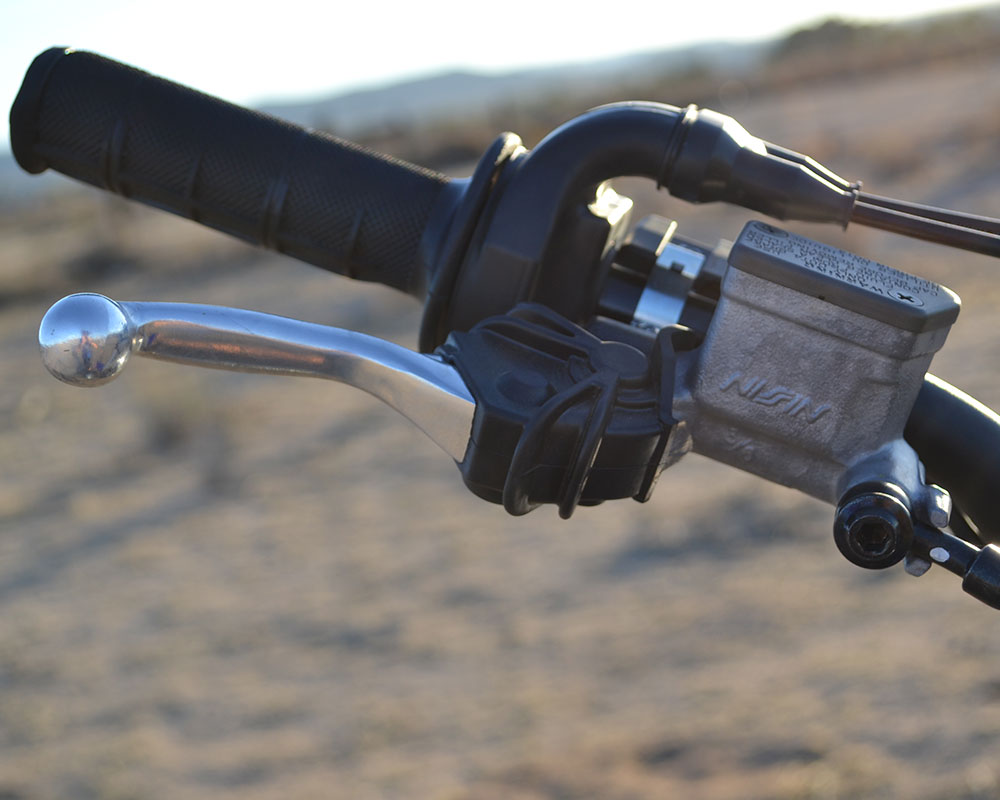
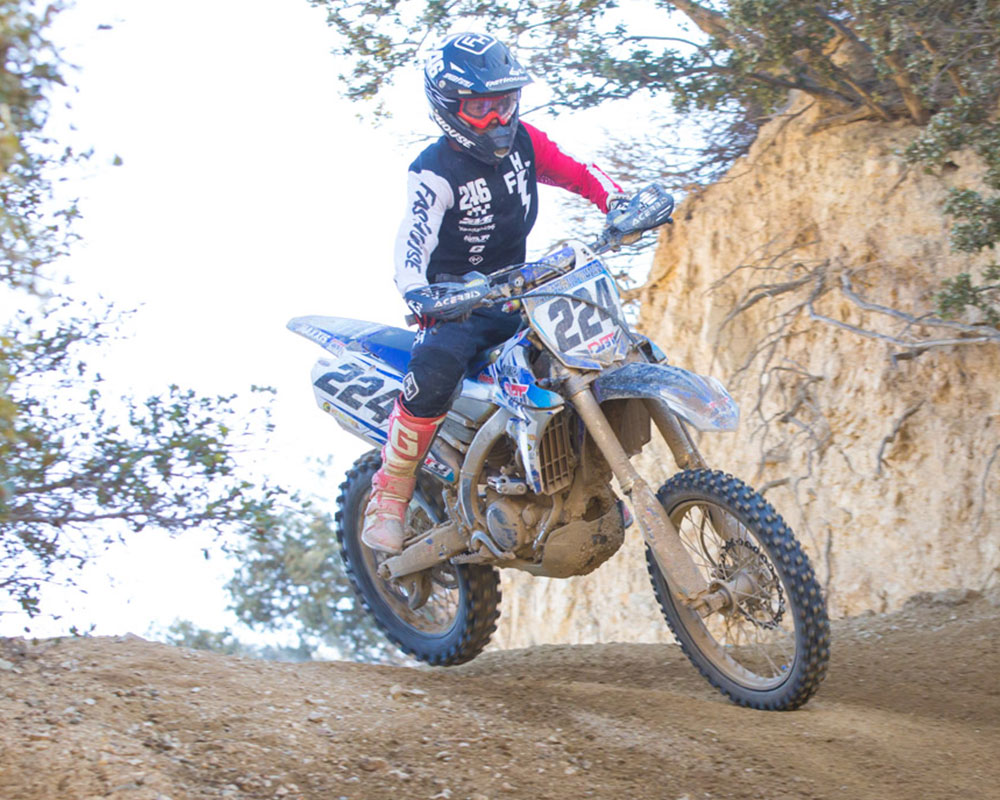

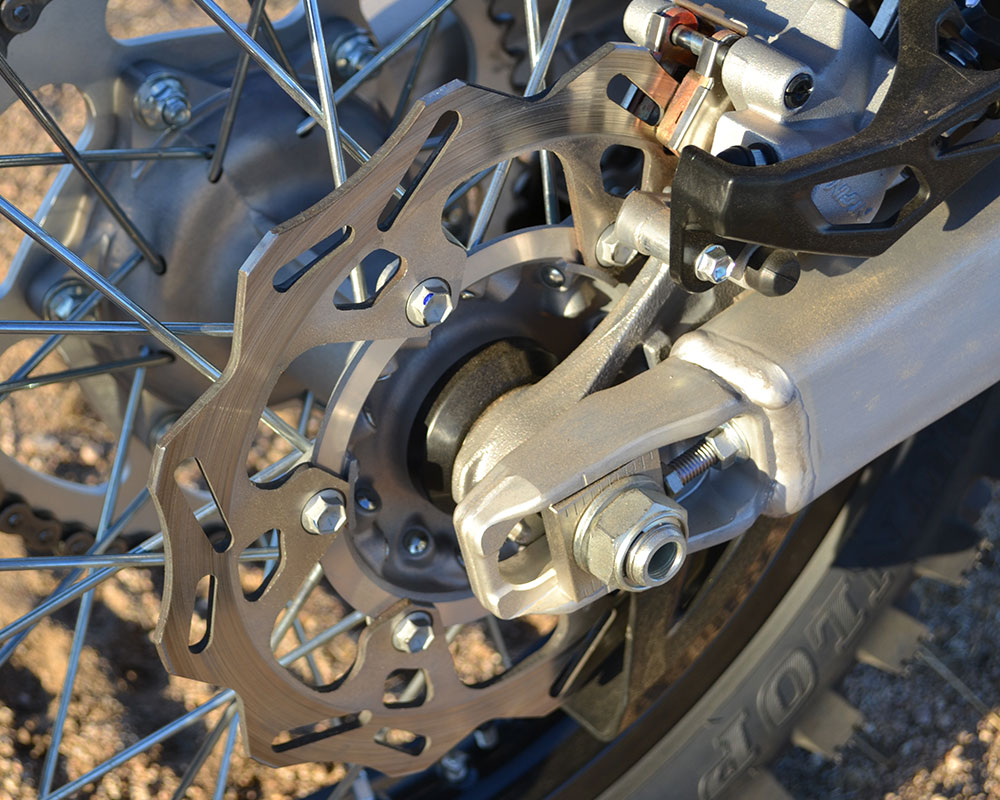


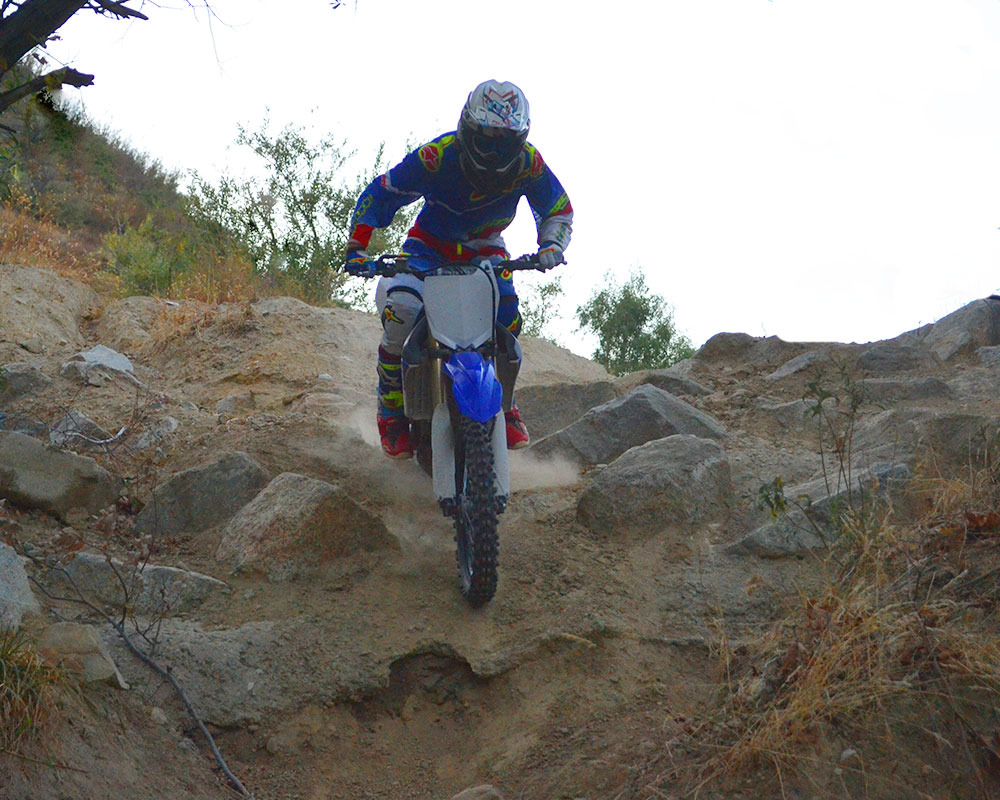


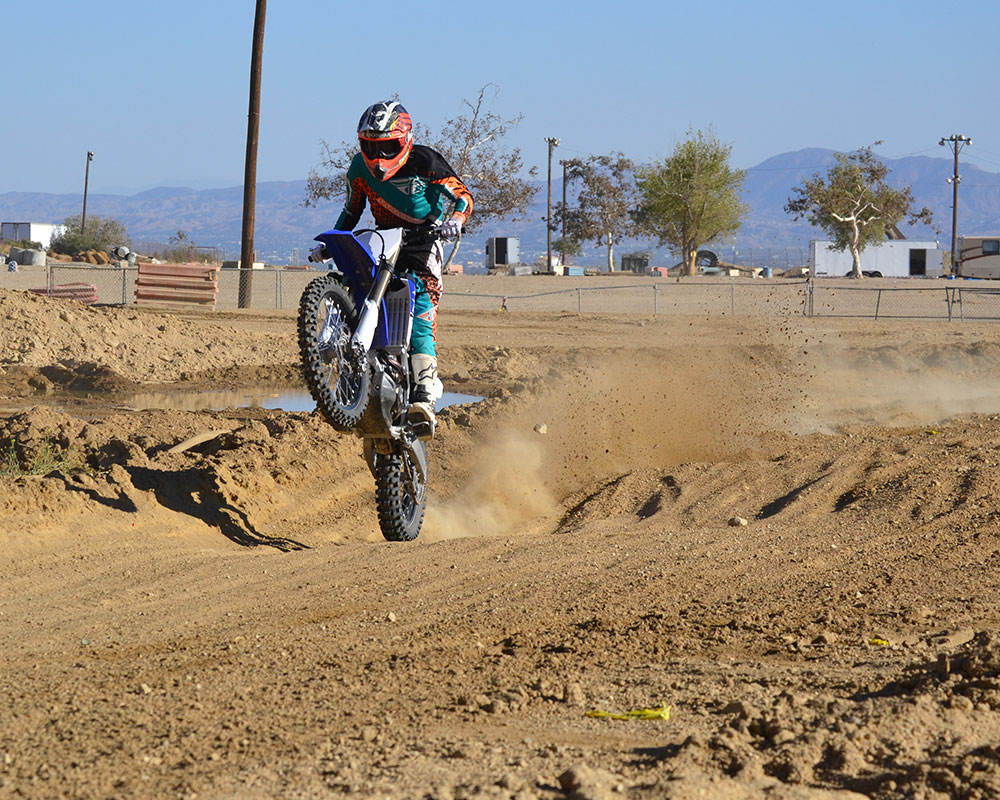
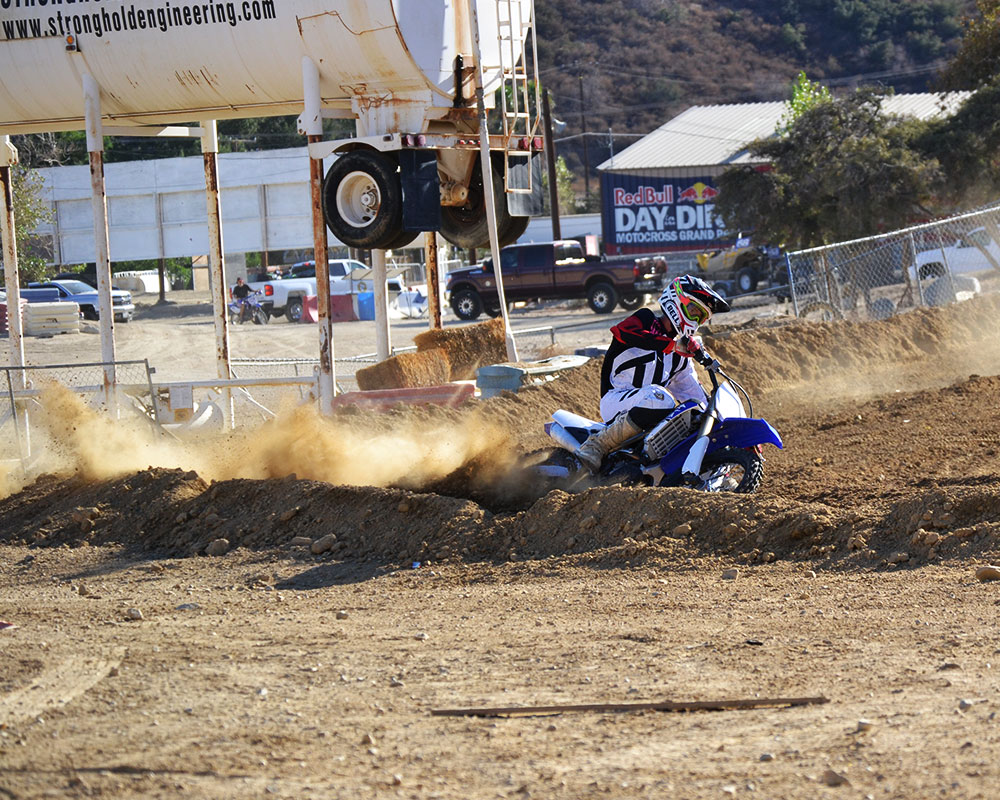
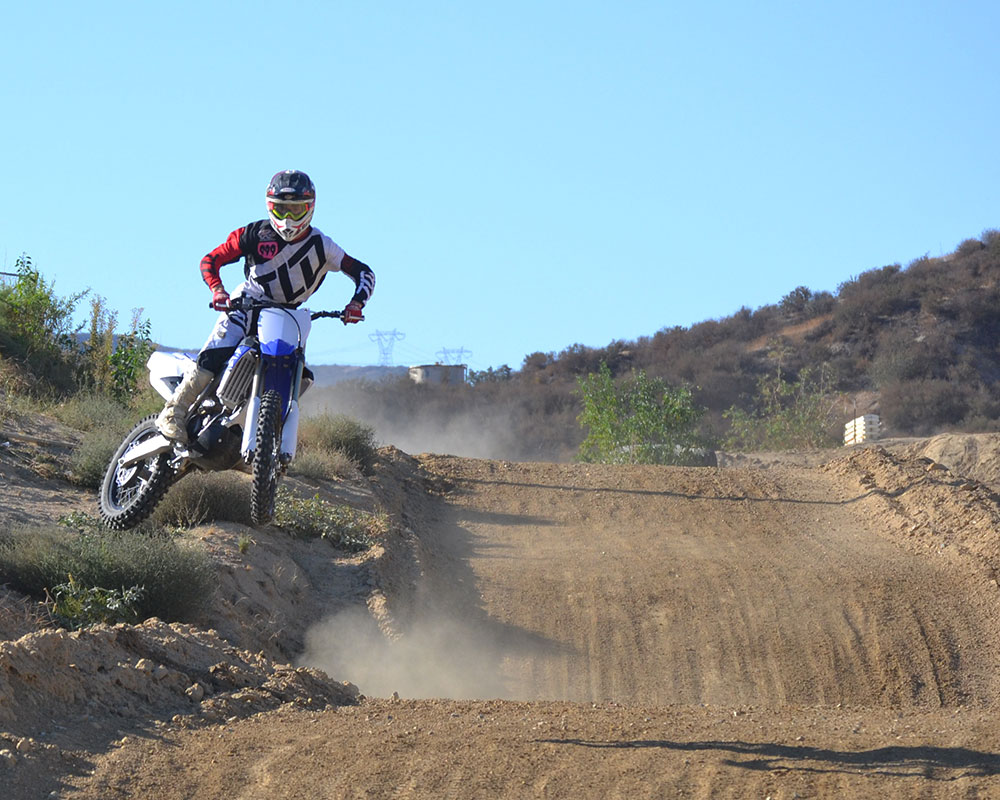
5 Responses to “2017 Yamaha YZ250FX Race Test”
Charlie Eller
The Yamaha appears to have has more low end and midrange compared to the 250f KTM. How does the Yamaha compare to the KTM 350? Is it in the middle of the 2 KTM’s or actually closer to one or the other. I have only ridden a 2017 KTM 350 xcf and my 1st 4 stroke, a 2017 Yamaha 450 fx I have been a 2 stroke guy, but moving to Arizona has me appreciating how easy the 4 stokes hook up in the loose granite trails.
Jimmy Lewis
Without having the bikes back-to-back but having considerable time on both I would say the Yamaha feels like a 280cc if it were a KTM. Hope that analysis helps.
Jimmy Lewis
https://dirtbiketest.com/wp-content/uploads/2017/03/PC_250FX_T6SS_H10.jpg
This is a leaner and more aggressive map our younger testers liked.
Kye Gunn
What is the top speed of the 250FX in stock form? I’m very curious. Will it out run the 250X when the desert/trail/fire road opens up? I’m going to be buying my last dirt bike very soon. It has to do it all. My son is 16 and wants a 250F and we will be sharing the bike. I like the 250X, but this FX looks like it is a better all around bike. What do you think Jimmy Lewis?
Jimmy Lewis
But now there is a Honda CRF250RX…So many choices. Top speed of the Yamaha YZ250FX was just under 90 MPH if I remember correctly.